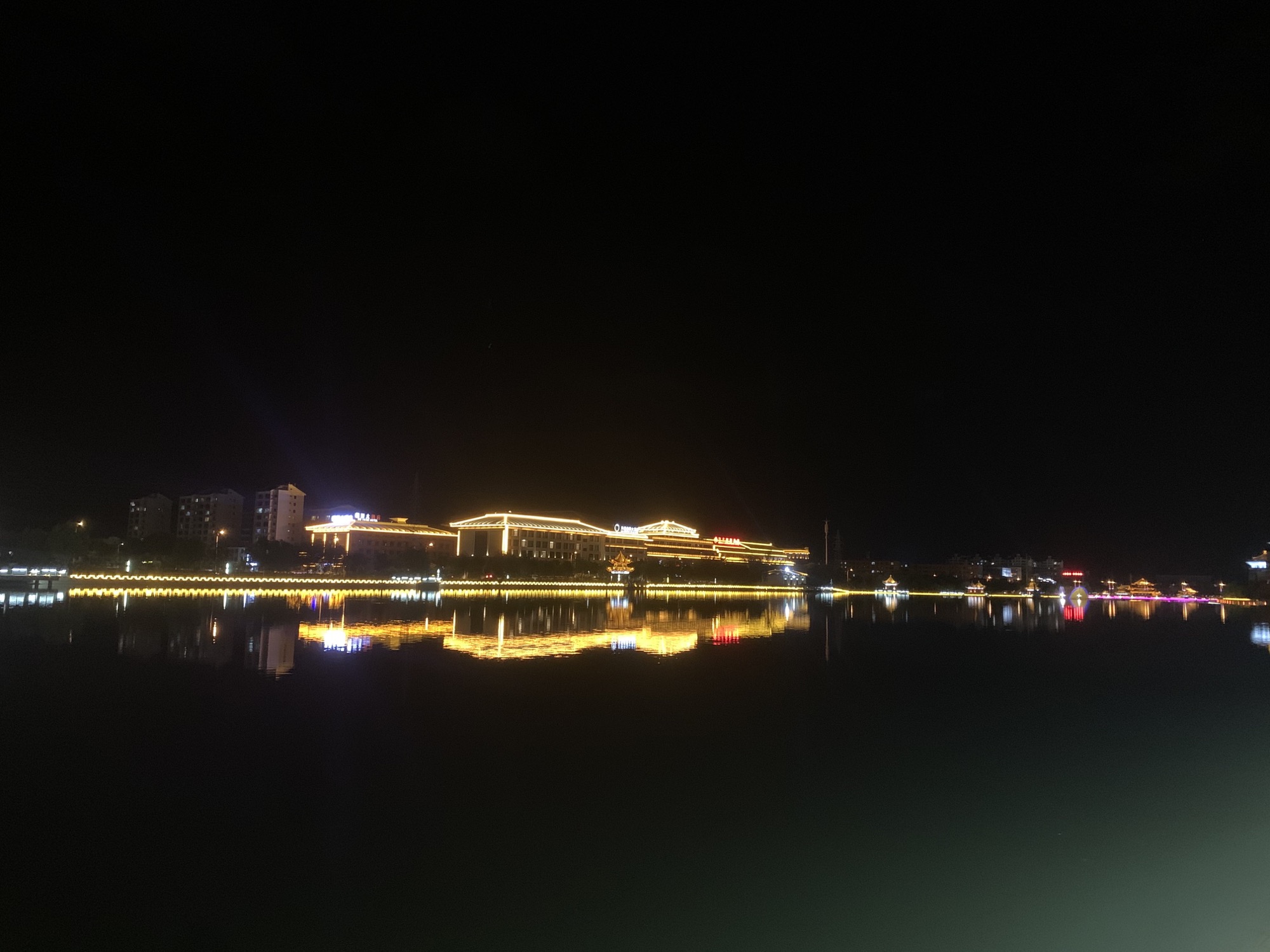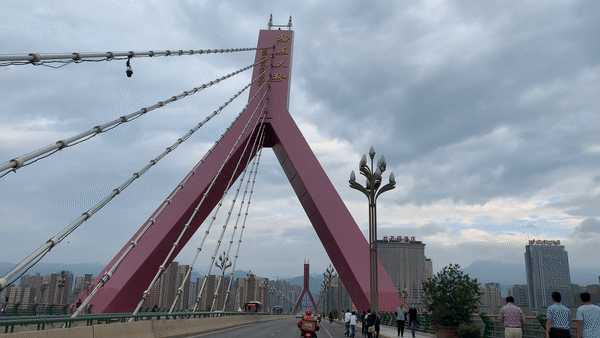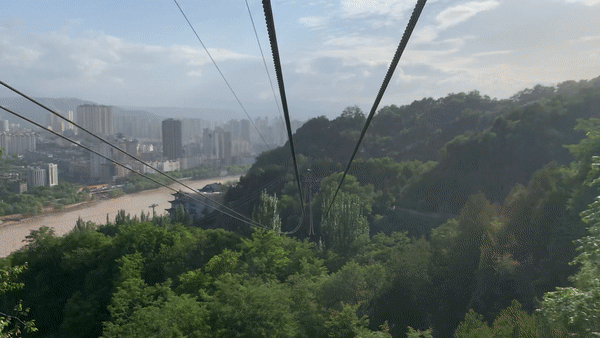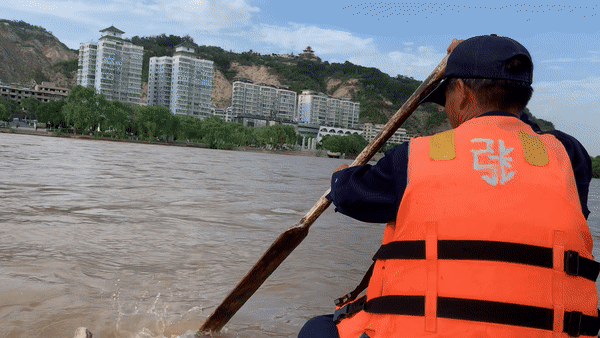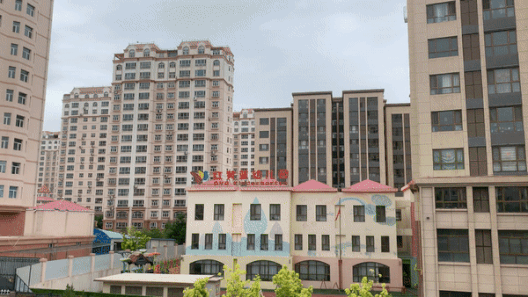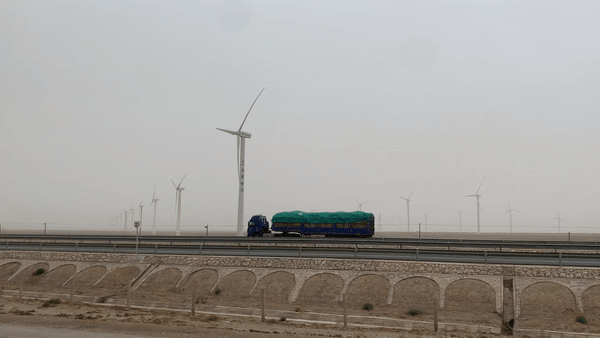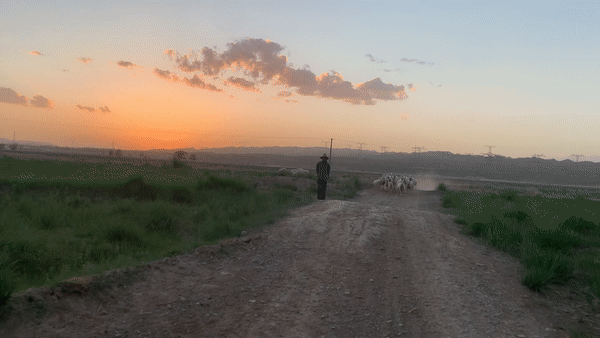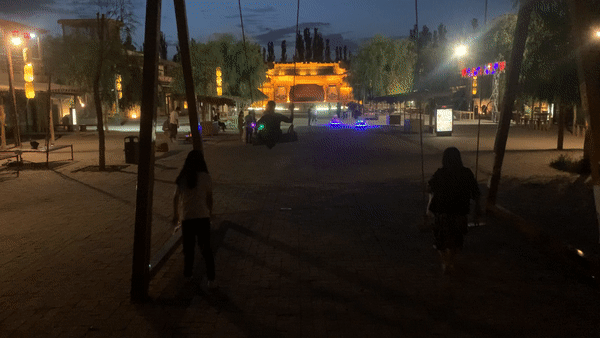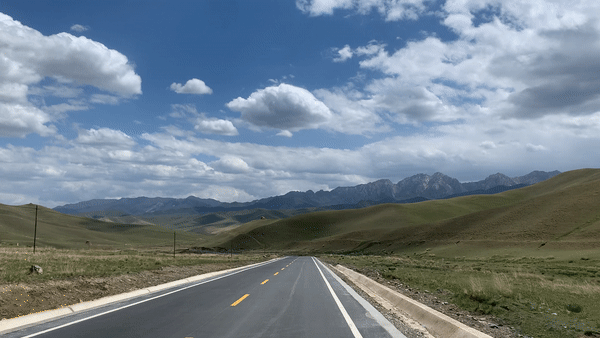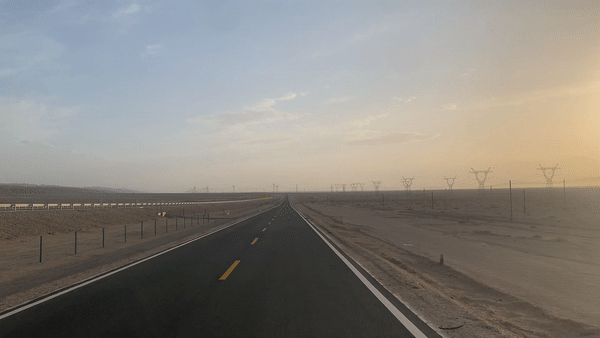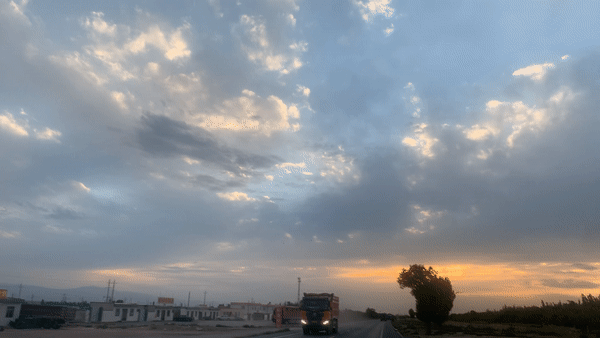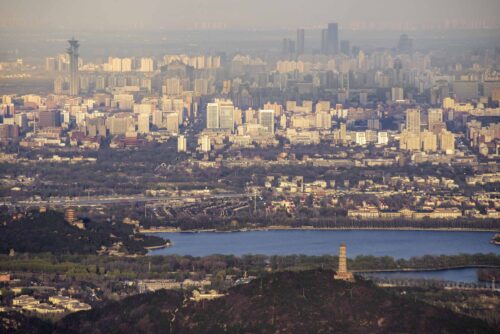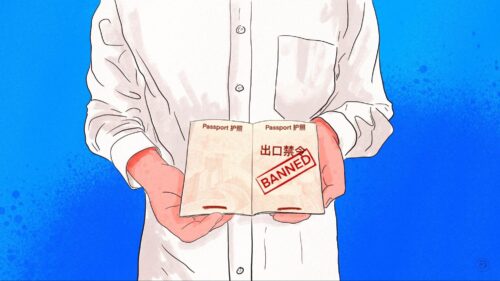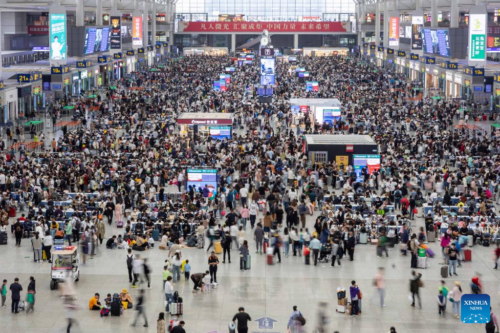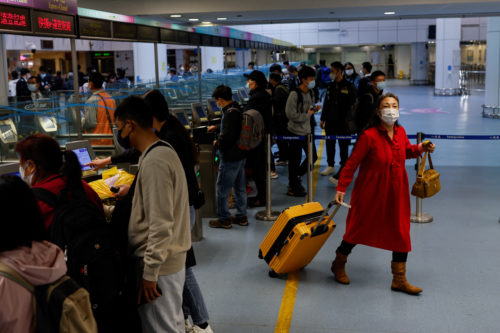In search of spirit in China’s wild west
Through history, culture, and contemporary China: A motorbike trip from Xi'an to Dunhuang.
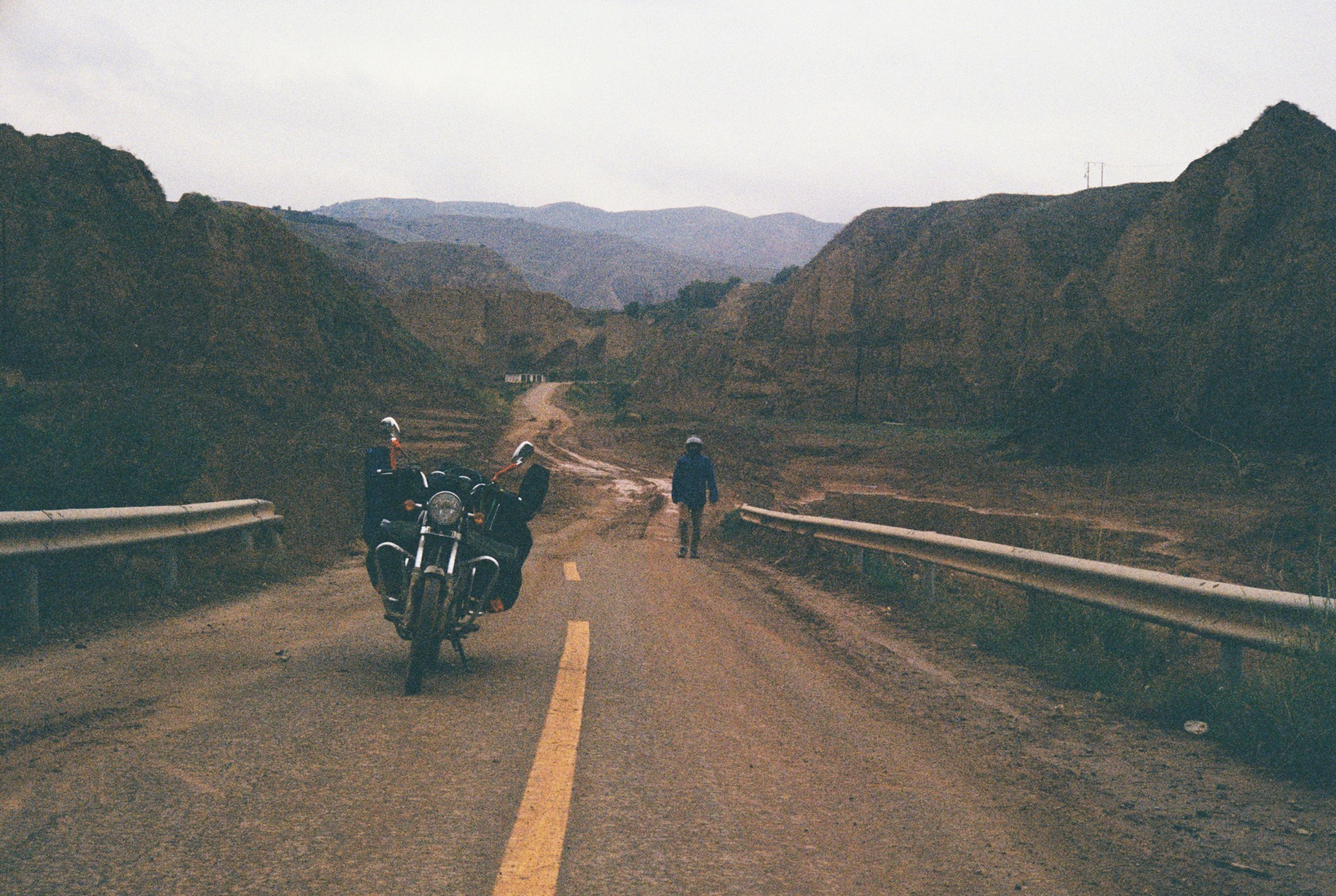

“What are you doing way out here?”
The policeman isn’t exactly glaring, but his look is filled with intent. We are beaten and weathered after a full day of driving through desert roads. We are outsiders, and though we have done nothing wrong, the fact that we are not from here is significant. For hundreds of years — though not so much lately — outsiders have passed through this part of northwestern China in both peace and war, seeking art and culture, spoils and commerce, immortality and blood.
We are mere miles from Dunhuang, home of the Buddhist grottoes and The Diamond Sutra, an ancient meeting place of civilizations — but first, we have to give four cops an explanation.
The officer waits. His question is sound. In truth, we had not exactly chosen the best time — June 2020, the summer of COVID — for a motorbike adventure. Me, I can mostly get by in China without looking out of place, with my Asian face. My companion, on the other hand, is Danish — a maniacally-grinning one at that, with blond hair, blue eyes, and cheeks that have been carved by wind and sand.
What are you doing way out here?
My friend tilts his head back, as he’s wont to do, ready to tell a story.

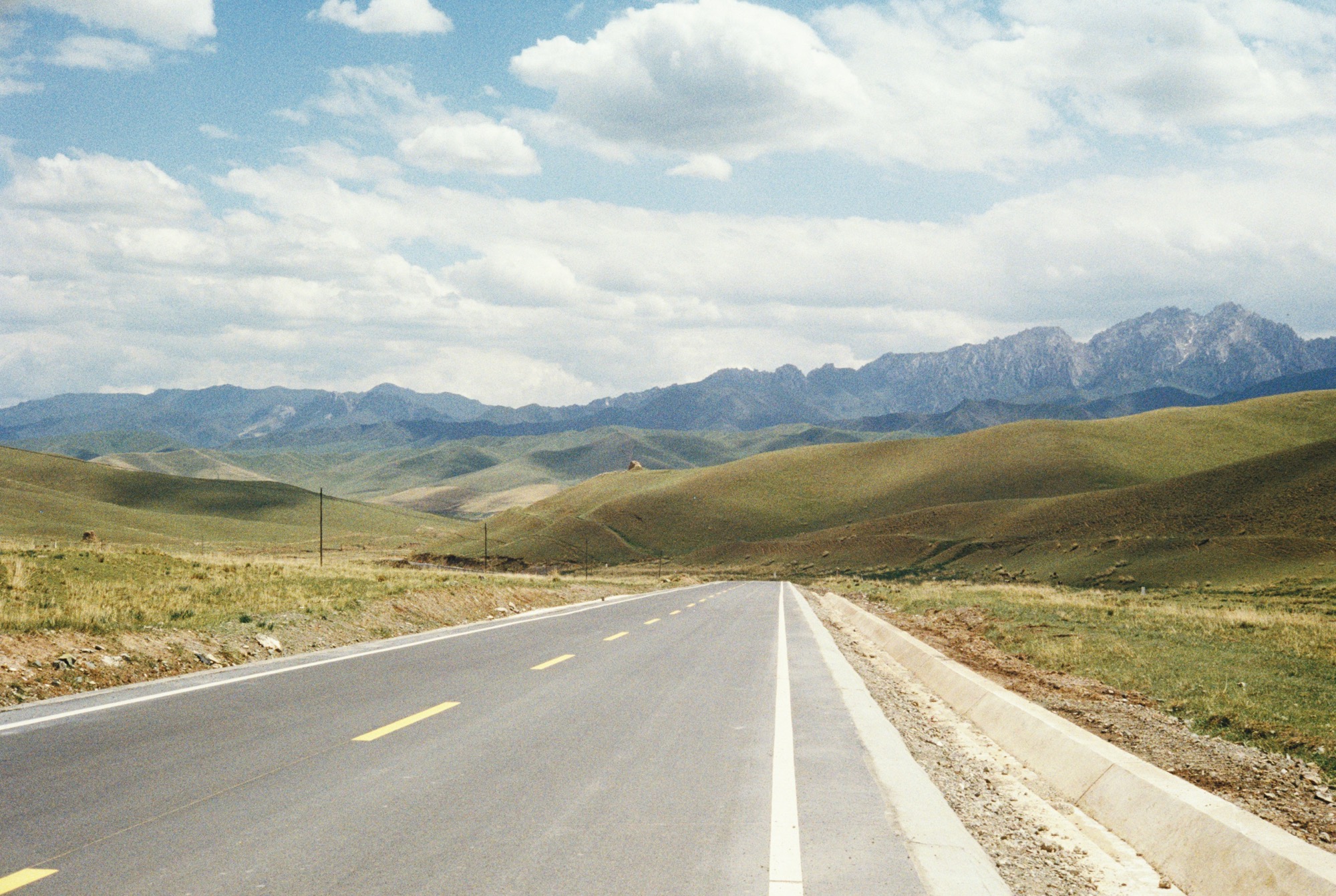

The journey from Xi’an to Dunhuang isn’t what it used to be, when marauders and bandits roamed the plains, mountains had to be scaled, and camels were summoned for desert crossings. But on motorbike, it is still possible to get a sense of the land. As Robert M. Pirsig writes in Zen and the Art of Motorcycle Maintenance, “Through that car window everything you see is just more TV…On a cycle the frame is gone. You’re completely in contact with it all.”
And so, Mads Vesterager Nielsen and I decide we’ll do this 2,000-kilometer (1,200-mile) trip on motorbike. It is mostly Mads’s idea, told to me one winter evening in a bar in Beijing. He is a spiritual descendent of European swashbucklers such as Sven Hedin and Henning Haslund, full of zeal for adventure and roisterous mannerisms. To hear him tell a story, head cocked to one side and delivering sentences in the stilted, dramatic rhythm of raconteurs, is to imagine sitting in a royal court in the early 20th century being regaled by a just-returned explorer’s tales of “Peking,” with “its malignant gossip and political intrigues” (as Haslund, Mads’s countryman, described Beijing in his book Men and Gods in Mongolia). Mads is a fanatic for the open road. In 2013, he motorbiked 1,500 miles from Guangxi to Beijing on a $300 tiddler, along the way being told something that he’s never forgotten. Do you think we can make it all the way to Beijing on this motorbike? he had asked a hostel owner, to which she replied, “If you are nice to people, then it’s going to be all right.”
We begin in Xi’an, the city of the Terracotta Warriors and Muslim Quarter, where, in one pass, we consume lamb skewers, kebabs, roujiamo (“meat in a steamed bun”), hot-oil noodles, potatoes, ice cream, and beer. On an art market street, we encounter a man on a curb preaching as if he’d found enlightenment in the hills: “Westerners only see linear, they’re Newtonian, point A to B to C” — eyes charged, a head of silver hair shocked back as if by wind — “unlike us Chinese, a people without creation myth; for us, things proceed along a circle.” We walk by a bar where a Chinese singer croons a passable rendition of Radiohead’s “Creep” to an attentive audience of five. And of course there is the ancient Xi’an wall, a stately edifice that stands as a reminder of trade, worship, bloodshed, destruction, and renewal.
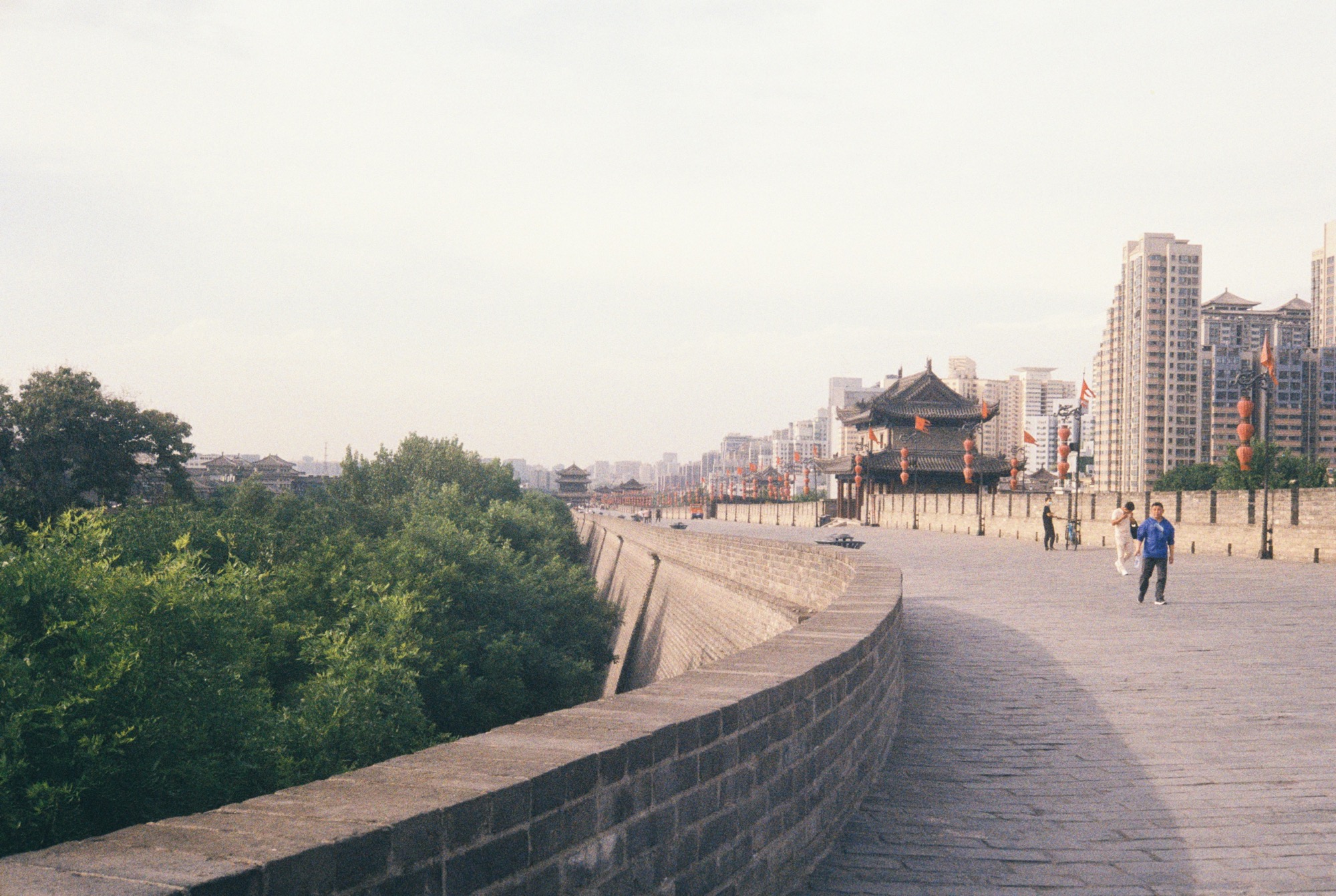
At a bar next to our hostel on the final night before our departure, we sit with the owner, Kang Yuan, an ex-professional-footballer-turned-musician, and talk about politics, virtual proxy networks, and Zhang Jiacheng, the one-handed basketball player whom Steph Curry praised. “Deng was correct in his actions. When there were problems he couldn’t solve in his day, he kicked them down the road for people after him,” Kang Yuan says, meaning Deng Xiaoping, the former Chinese leader known for saying, “Conceal your strength and bide your time.” I want to critique the assumption that future generations will always be there to clean up messes, but then again, China’s been around 5,000 years, and is still here. For us, things proceed in a circle. The future is foretold in the past.
“People just want to live well,” Kang says, his legs straddling a drum. “When I was young, I was very anti-Chinese Communist Party. I wanted to be a dissident. But my mom, who is retired and gets 4,000 RMB ($570) per month from the government, said to me, Be careful. Because the CCP raised you. It’ll take care of you.”
We drink Estrella and Glenfiddich and sing songs — Jimi Hendrix, Teresa Teng, the Eagles (“We are all just prisoners here of our own device,” Mads belts) — until everything feels familiar, like we are in a place without geography, with friends without nationality. This can easily be a dive bar in Curry’s Oakland or Thom Yorke’s Oxfordshire.
There is a cliché — among the many clichés about China — that to know the real China, you have to venture out into the countryside, as if its major cities were fake. I think what people mean is, you would be foolish to believe China is only its pompous modernity, its skyscrapers and Western-educated office workers. But “real” isn’t the right word. To know China’s diversity, its breadth, you have to place yourself among the people, in the landscape. Remove the frame, along with any preconceptions.

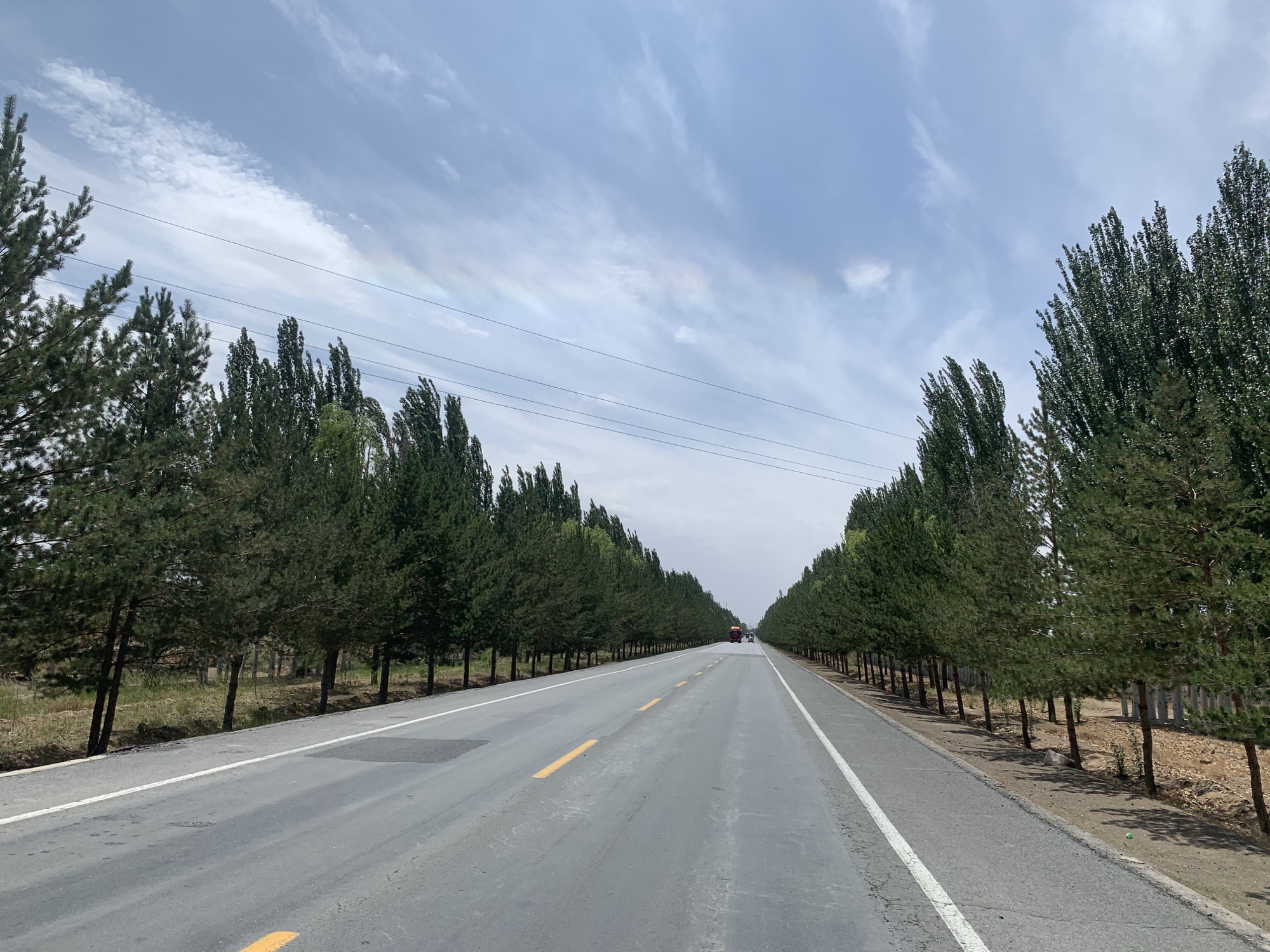
The city of Baoji, classified as a “third-tier” city, is the second largest city in Shaanxi province, population 3.7 million. We passed through on our way to Lanzhou.

Some stops are planned, and some are unplannable. In a one-road village whose name I’ll never know, we pull over to inspect a church which stands like a prop in a theatrical production. Walking through the iron gate into the courtyard feels like entering a dusty village in Europe, though the church itself is just a concrete building with a Catholic façade bearing the words Una Sancta, Ecclesia Catholica, Apostolica. Two old women kneel at a pew before a cross, reciting a prayer, musical in any language, to Santa Maria and god-knows how many other saints. We feel guilty for interrupting, but they don’t seem to mind, smiling bashfully and rubbing rosaries between their fingers while answering our questions.
Mads asks what their dreams are.
“To get into heaven, of course,” one replies.
We follow the Wei River on a two-lane national road, sometimes called “highways” — in contrast with the larger “expressways” where motorbikes are forbidden — flanked by the Qinling Mountains to the south and an elevated plateau to the north. We go up mountain roads in drizzle and mist, pass small cemeteries, mud huts and village houses in the modern style, and front-yard gardens with Chinese toon, goosefoots, potatoes and tomatoes and corn. Every 800 meters or so, we pass a honey farm, where beekeepers or random old people scrutinize us, eyes squinched, before breaking into the widest toothless grins upon being waved at.
We arrive in Tianshui to see the Maijishan Grottoes, where there are more than 7,200 Buddhist sculptures carved into a rockface, with signs in English that boast of the celestials’ “plump skin and fluent drapery.” We dine on wild veggies in a nearby hostel and write in notebooks about the streams and creeks, the elevated expressways and railroads we’ve driven alongside, the many signs in the countryside that urge people to be wary of organized crime.
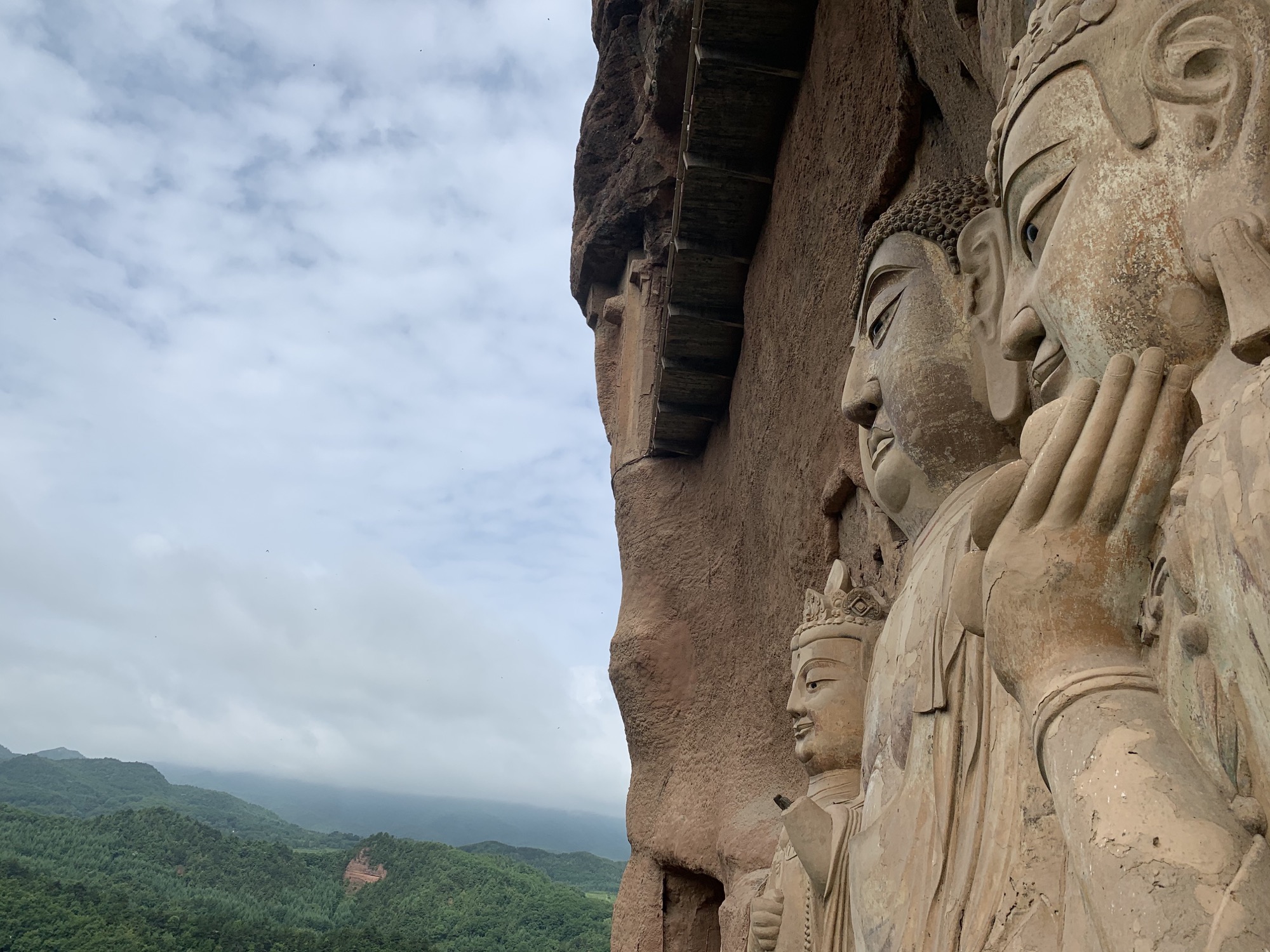
In the morning, we make a 350-kilometer sprint in eight hours to Lanzhou, the Gansu provincial capital, and pull straight into Rhino, a craft beer bar. The chef, who smokes with us on break, takes us to his friend’s whisky bar later that night, a place that mimics sophistication but has yet to convince its patrons that it’s gauche to order by the bottle.
“People here drink a lot,” the chef says — the first but not the last time I’d hear about the regrettable binge habits of Gansu residents.
We’re the last customers to leave. Mads, who raved incessantly on the road about dipping his face into the Yellow River, decides that now — amid the moonless dark — is as good a time as any. “We need to feel the waters of the river,” he says.
We clamber down stones, hop a metal fence, and then we’re there. Up close, the sound of the surging water becomes a kind of illumination. For centuries, when anyone arrived at a rivertown, they would first go to the riverbank, where they could commune with the soul of the place, feel its emphatic, sopping heart. But the Yellow River is sui generis, because here they would also pay it obeisance. The Yellow River is a totem, worshipped for the life it brings and feared for its temper, for the many times it has buried cities under mud and silt.
I know the water is yellow, but can’t see color; I know it comprises the melted ice caps of the Himalayas, but feel no texture; the current sounds like a cavalry stampede, but with my hands submerged, I discern no shape. I see Mads scoop water onto his face. “The Mother River,” he gasps.
We are compelled forward, downstream, where Tomorrow Club thumps, club-goers bouncing on a front stage while the DJ cranks trap, trance, techno. Plump skin and fluent drapery, I remember from Maijishan. At closing time, kids stumble over sofas and plant themselves outside on the curb, eyes hollowed, open Champagne bottles and vomit between their legs.
Lanzhou lies at a strategically important crossroads of the Silk Road, the start of the Hexi Corridor, a narrow traversable plain across the fish-like body of Gansu that leads to Dunhuang and beyond. Here, the fertile land makes for easy access from the far western regions to the northern Chinese plains between the Qilian Mountains and the Gobi Desert. From the Tibetan Plateau, scores of traders and pilgrims crossed Lanzhou on their way to Mongolia. The city was a Muslim powerbase for centuries until Qing troops decimated the population during the Dungan Revolt, which was actually a series of overlapping rebellions, slaughters, and counter-slaughters from 1862 to 1877.
It is now a supremely modern city, with famous food (Lanzhou beef noodles is the city’s best culinary import), a fun university district, and a riverwalk. It is a hub for multiple industries, most notably petrochemicals. The city was also the site of one of the Qing’s first major international modernization projects, the construction of a steel bridge, Zhongshan, by German engineers. Standing on Zhongshan Bridge, I watch the water below roil and coil as if wrestling, side headlocks countered by the currents into hammerlocks and drop-toeholds.
Quite suddenly, we notice a clamor, and see that the source is a woman dressed in a brightly colored top, midriff exposed, and a long red skirt. She wears a majestic headpiece made of silk and beset with silver and bright pearls. This is Qiqi, an internet celebrity known for performing a Dunhuang dance called “feitian” — the dance of the flying apsaras. Cameramen flock around her and heads turn as the group — which now includes Mads and I — makes its way across the gray German bridge.
At the pier, when her entourage finally gives her a minute alone, we approach and make small talk. “What is your dream?” Mads asks.
“To promote feitian dance and bring Dunhuang onto a global stage,” she replies. Her smile is polite and rehearsed. It is a stock answer, but she looks like she believes it.

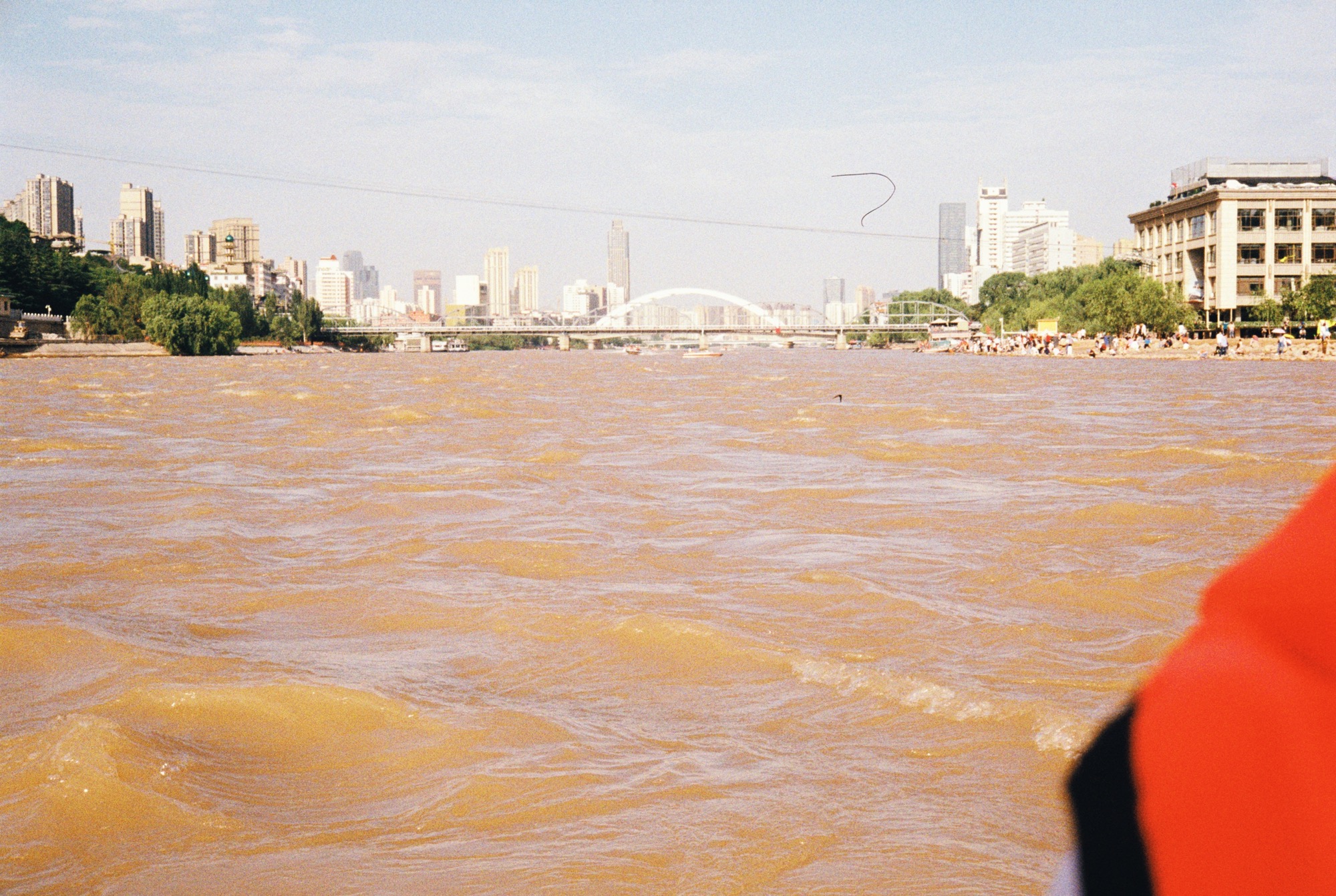
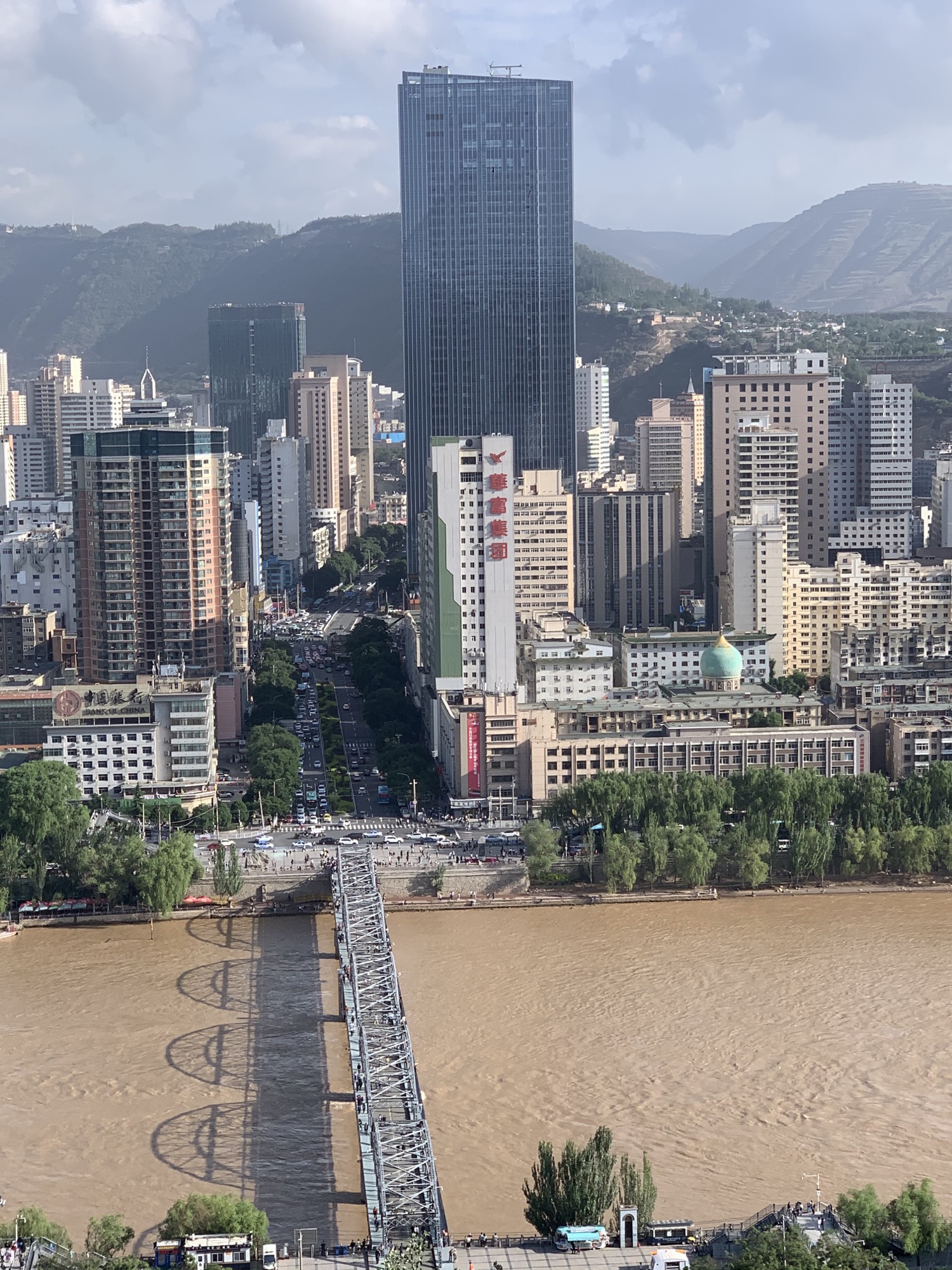
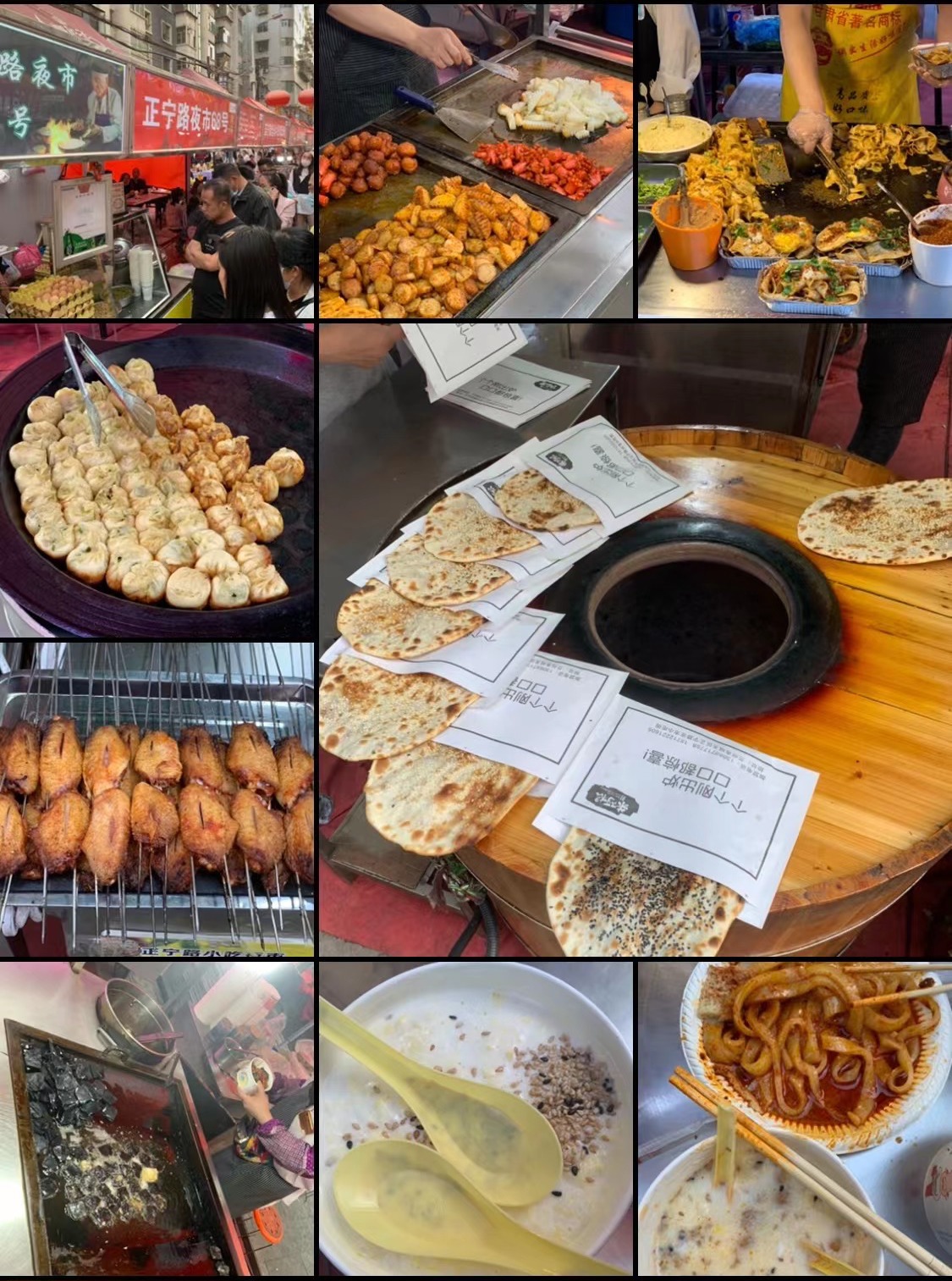
Floating down the Yellow River on a sheepskin raft.

For would-be motorbikers in China, a word: Make peace with your mortality before you set out, for you will be at the mercy of the reckless, the careless, the dumb — and occasionally the demons within which encourage your own terrible choices. Tankers will rumble with their wheels at shoulder-height, and drift; vehicles will pull out from side roads without checking for incoming traffic, like you; cars will pass despite solid lines that forbid just this maneuver, and try to squeeze back in at the last possible moment.
Or maybe you might drive straight into a guardrail.
Leaving Lanzhou, we encounter a crashed scooterist on the ground. A woman — his wife, we figure — stands nearby with a phone in her hand. Mads pulls to a stop. “Do you need help?” he asks.
The woman is OK, but dazed. “Yes,” she says hesitantly, still in shock. She says she has called her son but he doesn’t know where she is.
“Have you called an ambulance?” Mads asks.
“No.”
“Then you need to dial 1-2-0 right now.”
Mads goes over to the man, whose right leg is draped over the back trunk of a scooter tilted on the side. As Mads would later describe it, “It looked like a lump of ham was sitting on the side of his leg.” The man is in discomfort but resists outward signs of pain. A little later, he slips out of consciousness. Mads gently slaps his face. “He can’t fall asleep,” he tells the man’s wife. She seems to get the message, and begins urging him, “You can’t go to sleep, you can’t go to sleep.” The man blinks but doesn’t say anything, as if he only peripherally senses the pain he must be in. “Hurry, hurry,” his wife tells the dispatcher on the phone.
One ambulance pulls over. Mads runs up to the passenger-side door while I linger back. The ambulance is carrying another patient, the driver tells Mads.
“Can you call your colleagues?” Mads asks.
“If you’ve already called someone, then just wait.”
I can see the look of irritation and disbelief on my friend’s face as the ambulance drives away. Baidu Maps is woefully unhelpful, but I do notice a police station a kilometer back, which is where I send Mads on the motorbike, thinking the cops can give directions to dispatch, at least. Our ambulance arrives just as Mads returns with a police car in tow.
Two young officers step out of the car and survey the scene. We explain what happened as succinctly as we can. “You weren’t involved?” one of the officers asks.
Very briefly, a stab of anxiety.
“No, we found them like this,” Mads replies.
The fallen motorist is conscious now, sitting on the ground, immobile but composed. He waves his hand. I recall, subconsciously, all those headlines I’d seen about scams, about bystanders being blamed for causing accidents they were not involved in. But the motorist says, “I got dizzy and crashed.” I can almost see the relief on the cops’ faces as they understand that there is no dispute here. This was a one-scooter accident, an open-and-shut case.
The man is loaded onto the ambulance. Sensing we’ve done all we can, I nudge Mads and suggest perhaps it’s time to go; in the back of my mind, I worry that we’ll be asked more questions, fill out paperwork. But those concerns are unfounded. The officers tell us to be careful. “If you find yourself sleepy, you should pull over,” one says.
The woman thanks us profusely. “I don’t know what I would’ve done if you hadn’t stopped.”
Mads replies using the Chinese words that literally translate as, It’s to be expected. One of the officers puts his hands together, fist to palm, in a gesture of thanks, perhaps appreciative of everyone’s honesty. In the past, there have been well-circulated news stories of people refusing to help the fallen because they fear being sued. These incidents provoked a collective soul-searching across the country, with commentators aghast at what modern society had become.
For our part, there had been no choice but to help. “We have to think about what world we want to live in, what kind of people we want to be,” Mads says later.
That same day, ten kilometers outside the city of Yongdeng, which we approach in the dark, the traffic stalls. “There’s been an accident,” I say. The vehicles are backed up on both sides, some cars stalled front-bumper-to-front-bumper in a face-off, and other cars perpendicular to the road in botched attempts to U-turn. About a kilometer later, we see flashing red and blue lights, then cops, then shards of plastic and glass as if there had been an explosion, then the accident: a car had collided head-on with a cargo truck. The red sedan’s front is eviscerated, nothing left but a splintered windshield. There’s no way the driver survived, but I shudder to think what’s become of his body.
An officer is trying to direct motorists around the wreckage, but trucks have filled the road in both directions and the traffic has ground to a halt. “Be careful, drive slowly,” he says to Mads as we maneuver past.
“We will.”
“You have a license for this?”
“I do.”
“Where are you from?”
“Denmark.”
“Your Chinese is very good,” the cop says.
“Thank you,” Mads replies.
“Be safe out there.”

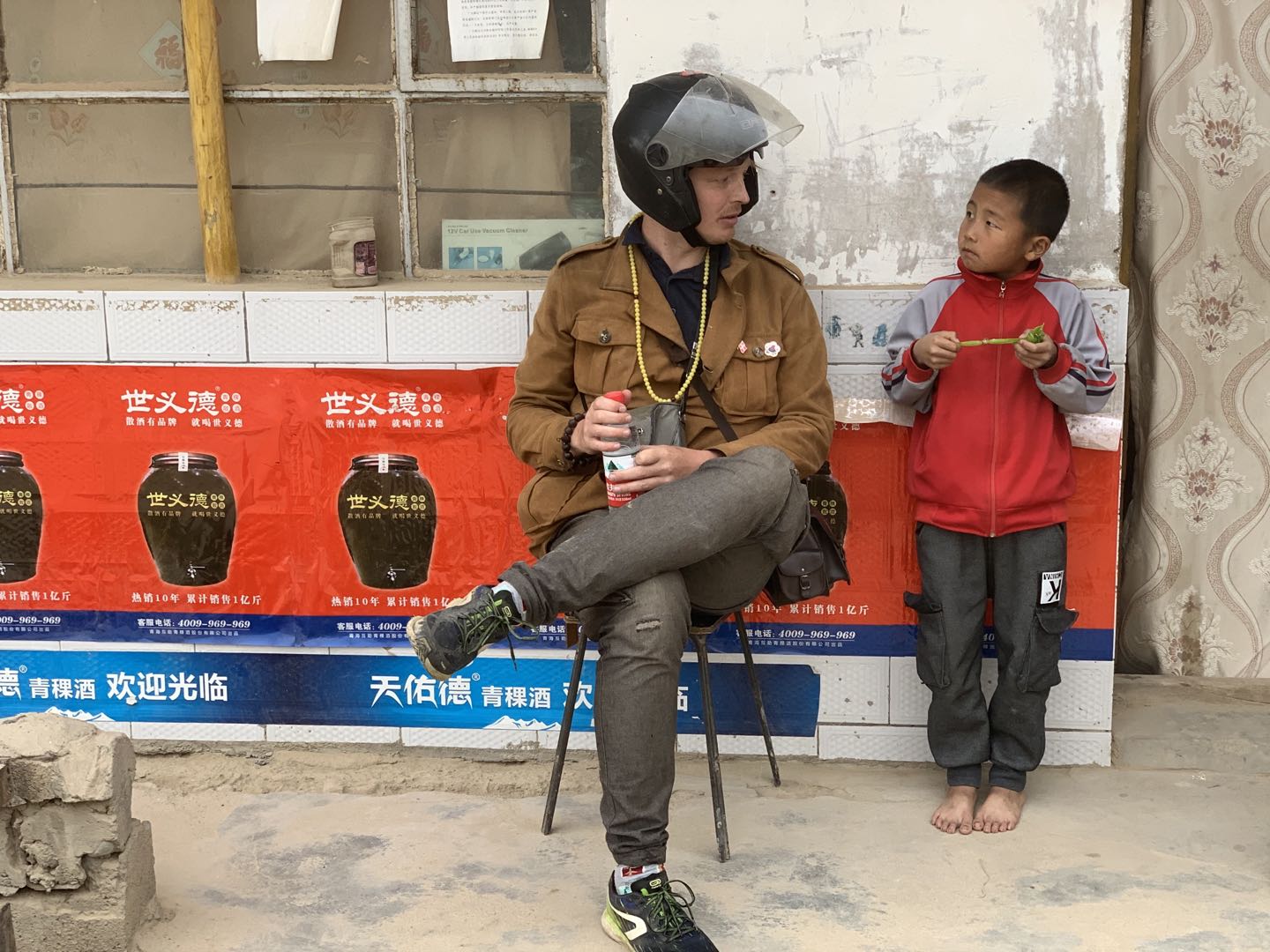
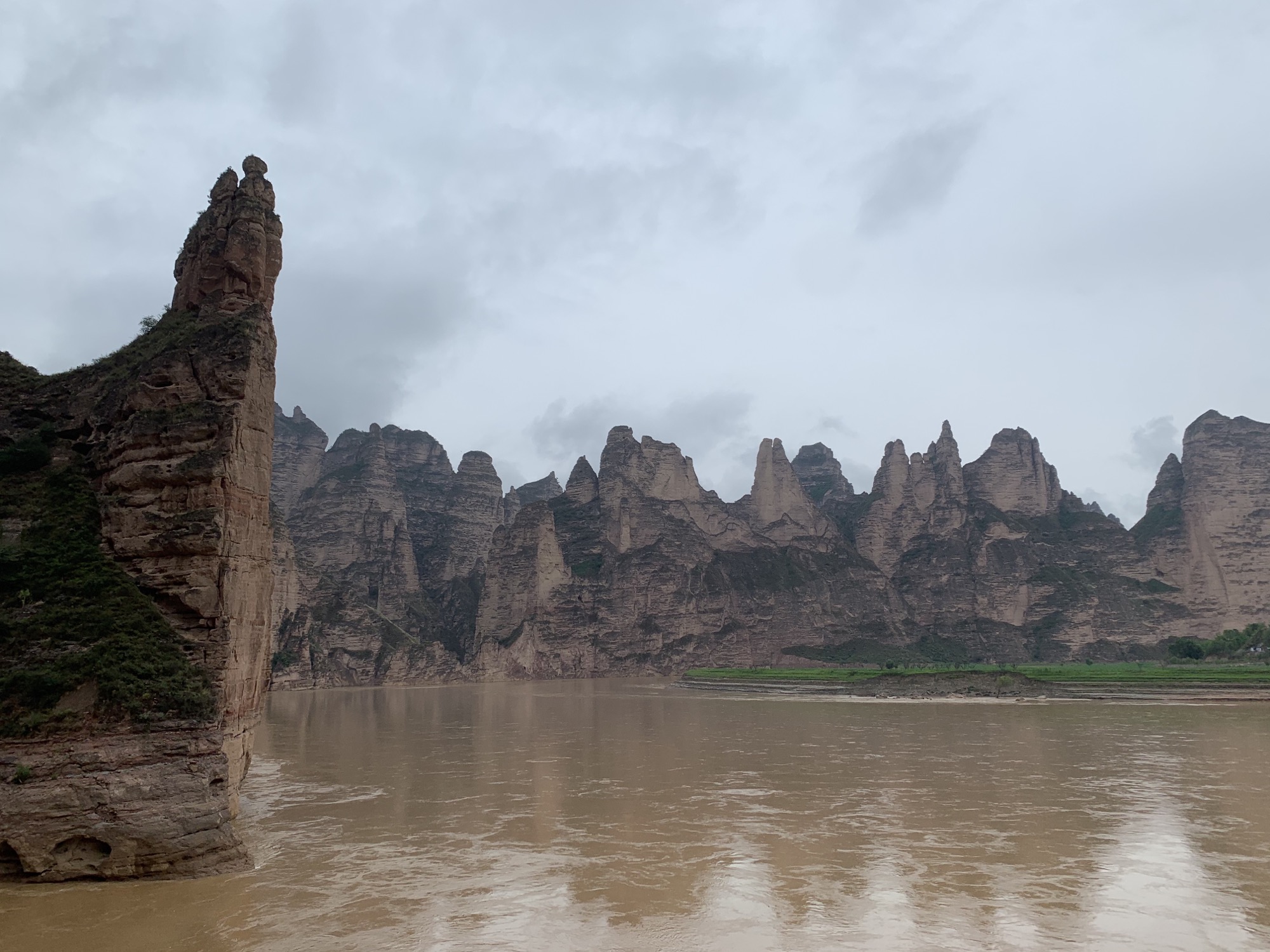

Yongdeng, known for its Kushui rose. It is late and we are tired, cold, and damp from an afternoon of exertion in the rain. We have passed two accident sites, were so close that we could envision ourselves as the victims. We decide on a medium-sized hotel, one that is sure to have a hot shower. The receptionist behind the desk, an older woman, asks for our shenfenzheng — Chinese IDs — and when we say we only have passports, she asks where our shenfenzheng are.
“Foreigners don’t have shenfenzheng,” we inform her. She frowns.
Five days prior, on June 11, there had been an outbreak of COVID-19 in a wholesale market in Beijing, ending a streak of 55 days without a local transmission in that city. The virus is very much on everyone’s minds out here in Gansu. The woman dials up the local police bureau, and when she hangs up, she tells us sorry, she can’t check us in if we don’t have shenfenzheng. No foreigners allowed.
We mill about the lobby a bit, searching AirBNB.
“Why are you wearing so little?” she asks, in an attempt to be friendly.
In the first bit of frustration I’d seen out of Mads, he replies, “We didn’t expect we’d need to drive around looking for a hotel that’ll take us.”
Our next attempt doesn’t go much better. We would discover later that notices had been circulated through the WeChat groups of hotel proprietors with a clear message: Don’t check in foreigners or Beijingers. Funnel them to designated larger hotels.
In Yongdeng, the only place that can take us is the local “five-star” hotel. The receptionist there grumbles as she scans our documents and takes our pictures.
“Do you take photos of all your guests?” Mads asks, more amused than annoyed.
She sighs. “Foreigners are a hassle.”
“Oh?”
“It’s the pandemic,” she says.
Of course, at this point, foreigners hadn’t been allowed into China for months, so those on the ground posed no greater threat than anyone else, but we bite our tongues, remembering that a little inconvenience is tolerable in the grander context of all the benefits foreigners enjoy in this country. The hotel at least had a stellar continental breakfast.
The next evening, under clearer skies, we roll into Jinchang and head straight for its bar street. It’s a doozy, with overhanging lights and cafes and KTVs and BBQ joints on both sides. One place sticks out: Urbrew, decorated with bottles on the walls, pictures of American pin-up models, and Bob Marley. Heads turn when we walk in. One of the owners, a chubby man in his mid-thirties, sidles next to us. “Let’s drink the Chinese way,” he says. The other bar owner, who is skinny, with sharp features, pours us a double IPA. “Chug this.”
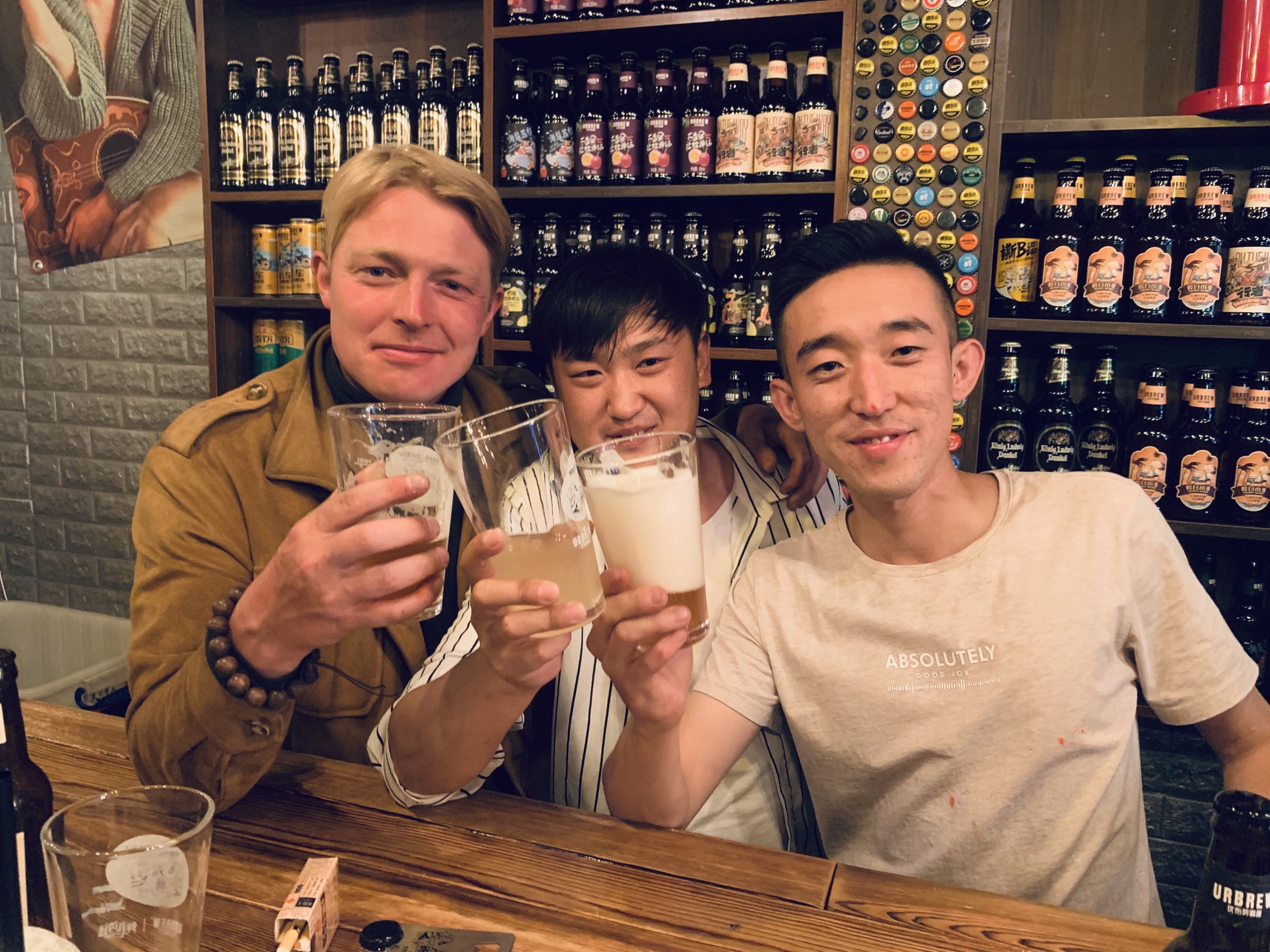
We drink and drink and drink — the “Chinese way,” with a somewhat toxic blend of machismo, abandonment, and pleasure. Our hosts order crawfish from next door and various meats. Mads repeats a toast that was a favorite of his family’s: “What have we done to deserve it so good?” Complications from the day prior are forgotten.
Our hosts won’t let us pay for anything, and eventually help us find a hotel. As foreigners, we shouldn’t be allowed, but our sharp-faced companion is a former soldier who walks with a literal swagger, like he owns the street. We check in without any questions asked. In China, it’s all about who you know — about what friendly strangers you might bump into far from home.

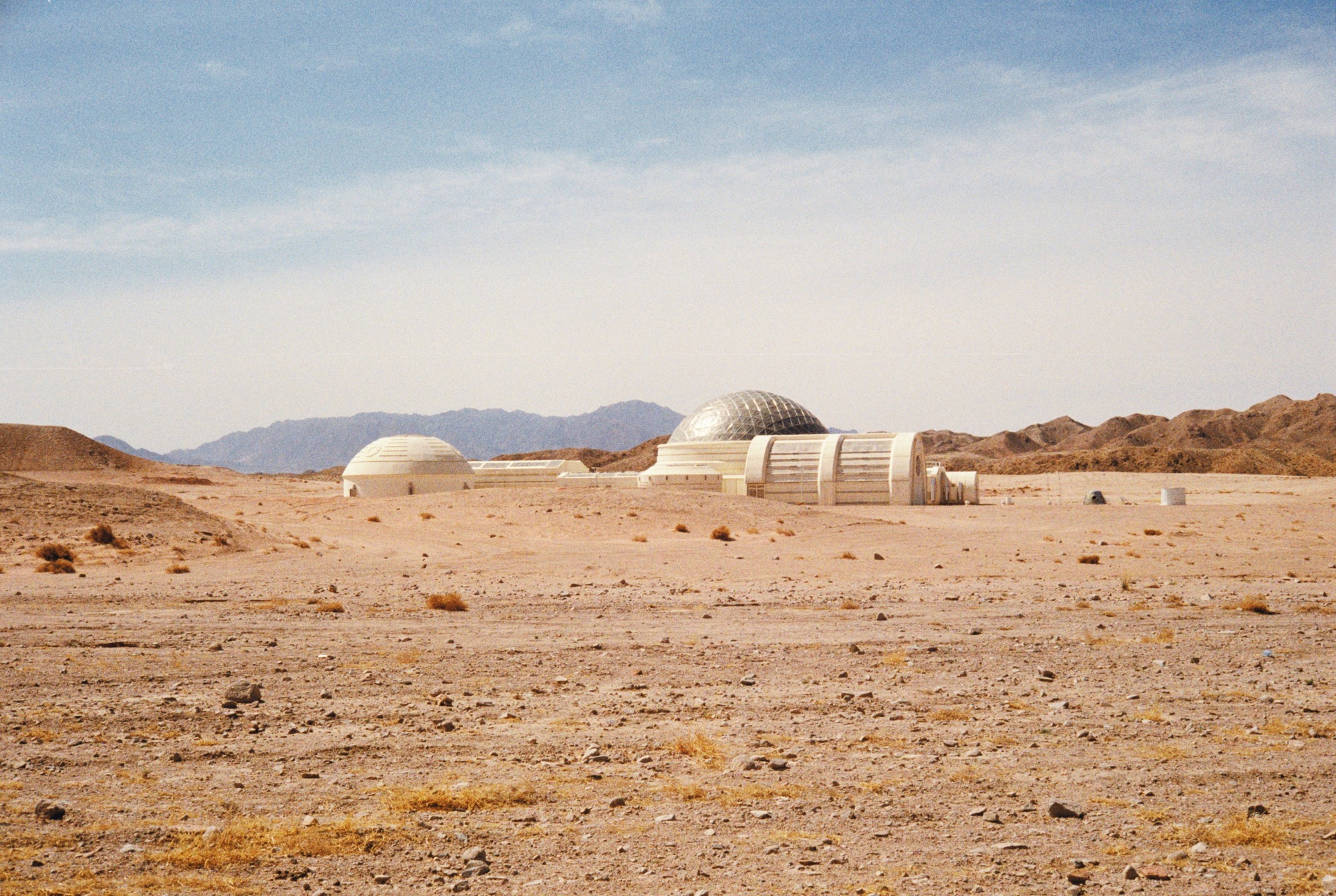
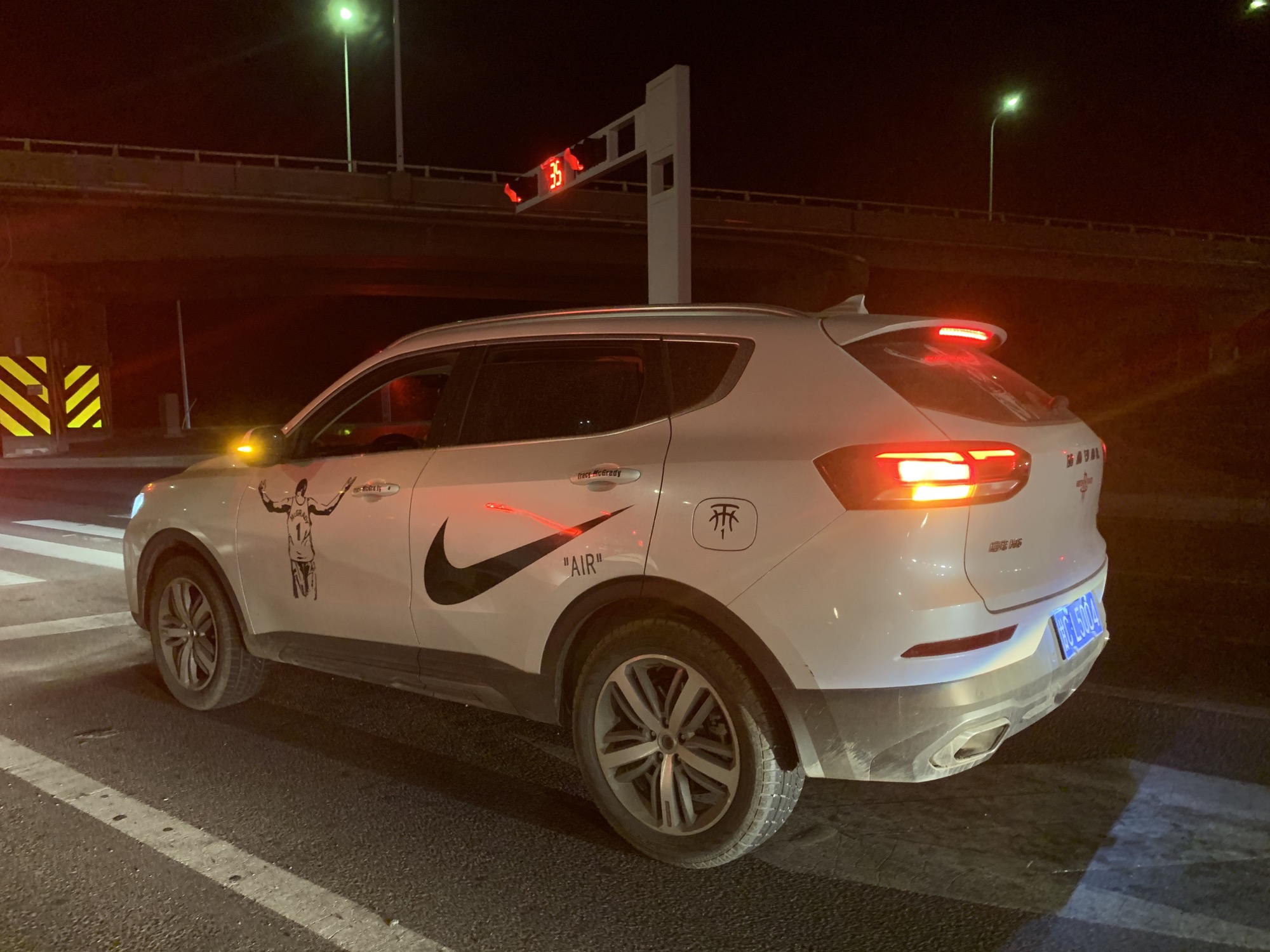

The next 220 kilometers to Zhangye feels easy. The city is situated at the center of multiple tourist hotspots, such as the Danxia Geopark with its rainbow hills (which I am not allowed to enter due to my having been in Beijing less than seven days prior, and the new cases of COVID there), but it really is a farming town, reliant equally on tourism and agriculture. It’s a strange mix, and has resulted in a splintered identity, with shops designed to attract tourists, selling souvenirs and tchotchkes, next to small hardware stores selling bolts, screws, and tools of everyday work. Long ago, the city was renowned for its Buddhist printing presses, but little evidence of that remains. In fact, authorities have seemed eager to re-sculpt the city for short-term gains, since tourism is easier money — though more volatile, as 2020 has demonstrated. The city’s bar street is literally called “European-style Street,” designed to look like a European village. It used to be bustling, but local officials couldn’t let a good thing be, so they widened the avenue and narrowed the sidewalk, hoping to attract more tourists. The effect is that now no one congregates like they used to.
Walking toward Dafo Temple, which houses China’s largest reclining Buddha, Mads and I wonder about the spirit here. Where is its center? Is it the reclining Buddha, a sculpture created around 1100? Is it the food markets, where people gather in the evenings? Or the contemporary food markets, with its canopied stalls, where we could buy lamb kebabs and meat-filled pastries?
All Chinese cities seem similar, without a discernible identity. This is partly by design, a result of rapid modernization carried out with little concern for aesthetics. Village bosses and city mayors and county chiefs and provincial secretaries and on up all want to deliver measurables of their good work, and there’s no easier way to do so than with construction projects using prefab designs. For them, the unquantifiability of “spirit” makes the very question of a place’s spirit irrelevant.
“They’re too conceited,” says the owner of the international hostel we stay at, referring to China’s leaders. “Foreign countries have given us a roadmap, their mistakes are ones we can learn from. We don’t have to develop at maximum speed. There’s no problem slowing down a little.
“Our decision-makers are in this for themselves. There’s a New Town here in Zhangye — you can pass by on your way out. They built residential high-rises there, but they’re all empty. This isn’t a town that can support that kind of building. Who would want to live over there?”
I think of what Kang Yuan, the bar owner in Xi’an, said about Deng Xiaoping, who set China on a road to prosperity after the Cultural Revolution but eventuated a litany of problems the country is still grappling with: There were problems he couldn’t solve in his day, so he just kicked them down the road for people after him.
The hostel owner, who is 47, isn’t necessarily chatty, but he has opinions. One morning, as China Central Television plays news about Donald Trump threatening to send in the military on Black Lives Matter protesters, he says, “Look at this news, always about how bad things are abroad. As if things are all roses here.”
“America is impressive,” he adds. “To think, a black man was president. Anyone can go over there and ascend to a position of power. That indicates a country with confidence. Only once in China’s history were we like this: During the Tang Dynasty, the Xiong, a minority group, could take up positions in the government.”
“Kids these days who debate me about the Chinese system being better just don’t know what else is out there,” he says.
I ask him how he came about all his views.
He ponders briefly. “Maybe it’s because I don’t have a formal education.” His dream is to own a piece of land, and perhaps eventually get his diploma.

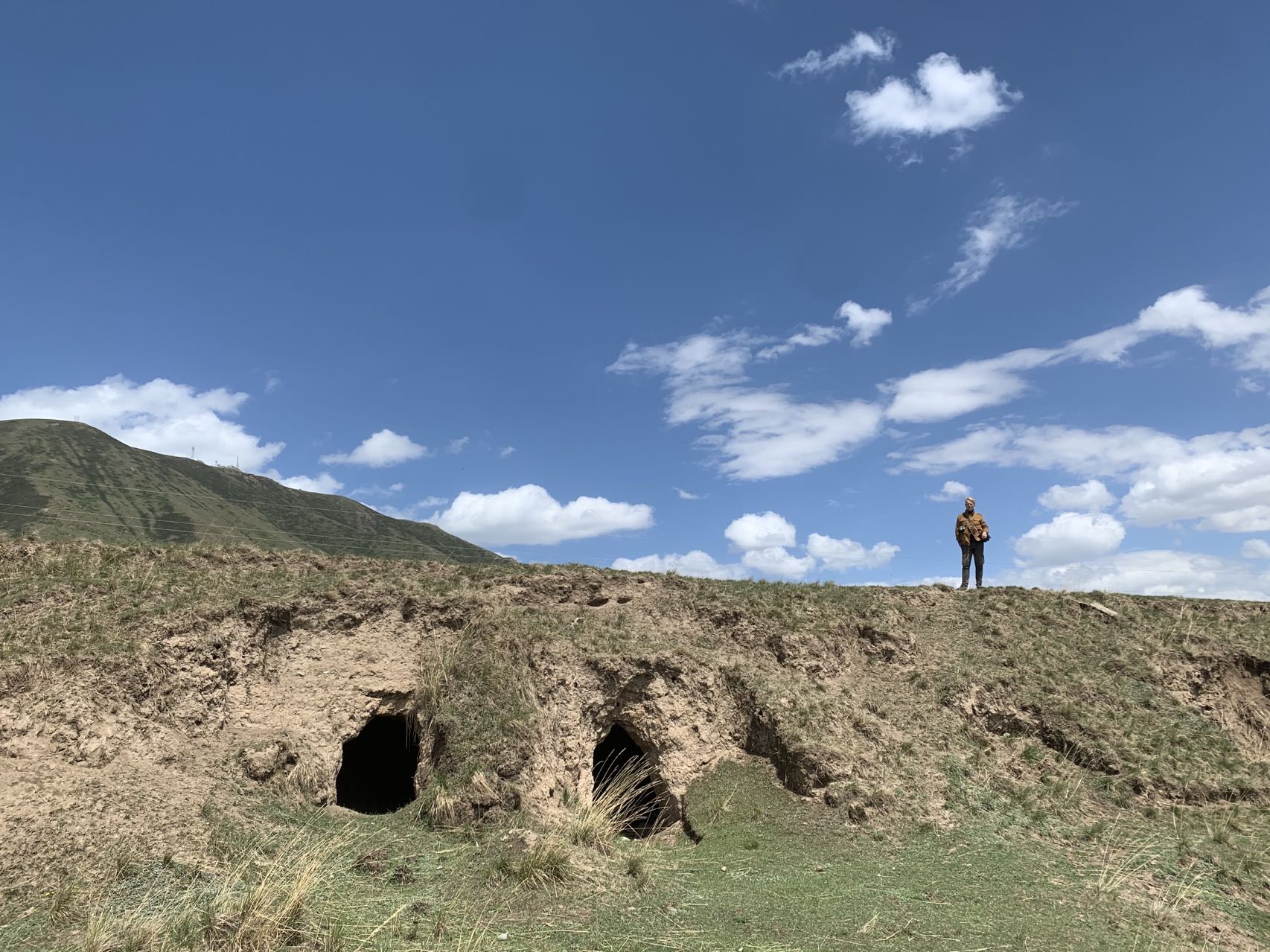
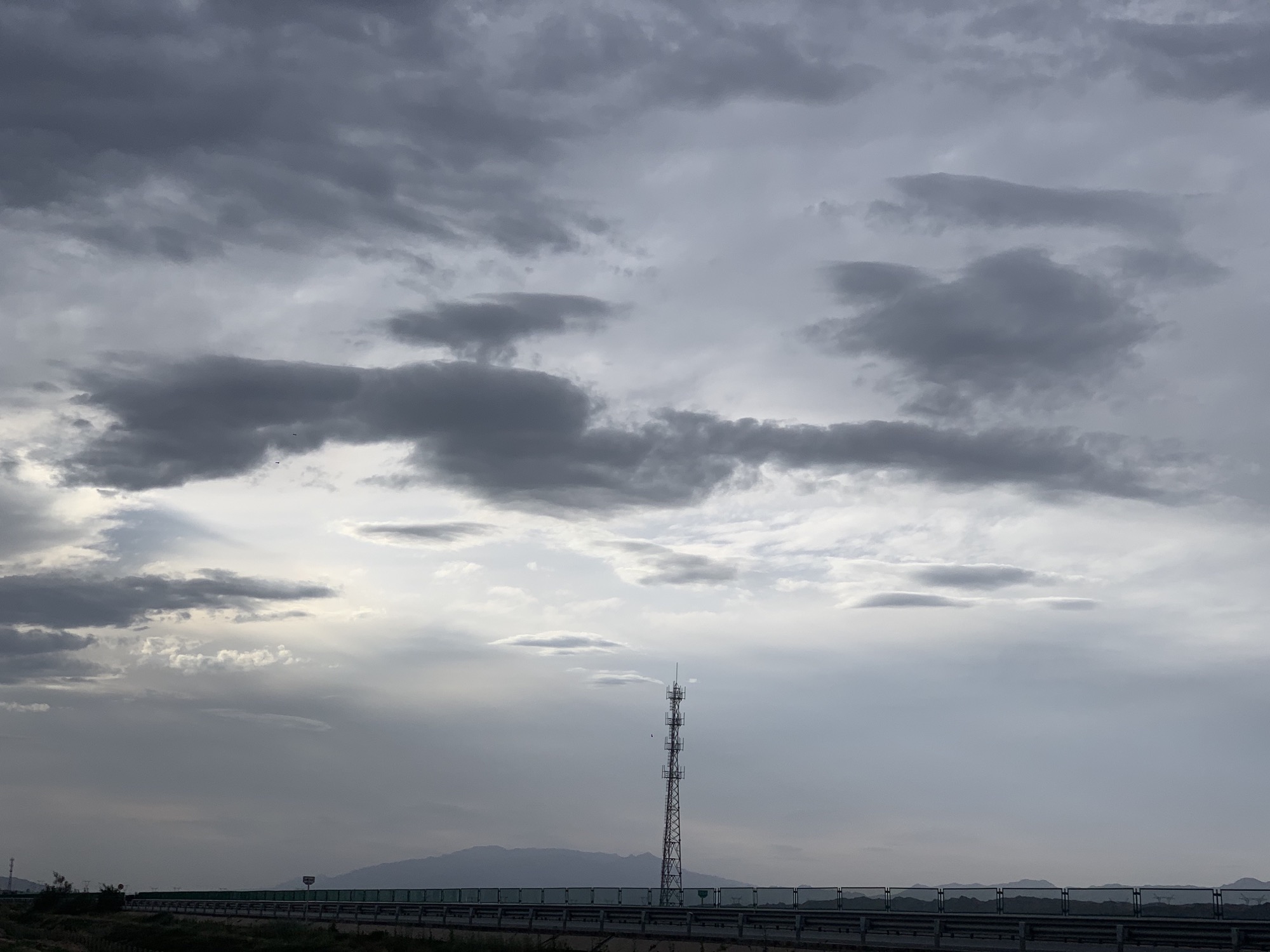

Back on the road, we zip across a flat landscape, electricity pylons jabbed into the yellow earth. Out here, we are graced by remnants of the Great Wall, eroded over the centuries into a waist-high fence of earth and stone.
I can describe the exact moment it feels like we reach the desert: one moment, the breeze jolting my windbreaker is cool; the next, there is a blast of heat and the air grows still, as if we had crashed through a portal. A little later, snow-capped mountains appear in the far distance where land and air converge.
We make a stop at Jiayuguan, best known for the Jiayuguan Fort, which marks the westernmost outpost of the Great Wall. Even though the ancient Han dynasty walls stretched farther west through the Hexi Corridor, all the way into Xinjiang, the Jiayuguan Fort held a near-mythological status in the Ming and Qing courts as the tail end of a long dragon. As “the first pass under heaven,” traders and travelers back in the day had to state their business and pay for safe passage. Many of the greatest Western explorers of the 19th and early-20th centuries also made their way through Jiayuguan, among them Sven Hedin, Aurel Stein, Ferdinand von Richthofen, and William Edgar Geil — the last of whom walked the entirety of the 2,500-kilometer Ming Great Wall in 1908.
Mads is in his element here, walking the footsteps of these explorers he’s studied — that he tries to emulate, if you ask me, with his epauletted safari jacket adorned with pins from places he’s been. He processes the surrounding history not as history but a story still being written. “Beyond Jiayuguan lay the deserts and wastelands and bandits from here and all throughout Central Asia,” he says on the fort. Through his eyes, I can almost imagine the outpost as it used to be, without the wafts of power plant smoke on the horizon. “This was the last frontier of Chinese empire, of civilization,” Mads narrates, “and the first place where the wrath of the barbarians rained down.”
The modern city, I must relay, is not entirely noteworthy except for perhaps a bar called Baroque, owned by a Chinese man in his 30s, Lu Lin. His selection of American IPAs include Left Hand Brewing, Founders, Sierra Nevada, Green Flash Brewing, and much more. The bar only comfortably sits two on one side. When I inquire, with genuine curiosity, about his beer selection, he looks at me quizzically and says, “You’re not from here, are you?”
“I am not.”
“Where are you from?”
“I grew up in the U.S.,” I say, forgoing my usual answer of “Beijing.” We talk about foreigners having a hard time traveling during COVID-19 — that night had been one of our most difficult in trying to get an accommodation, with even an AirBNB host canceling on us when she realized I had a Beijing number — and Lu sighs. “It really shouldn’t matter,” he says. And that’s when I know we’d have a good conversation.
We talk about censorship, and I mention the possibility of a cultural “reform and opening up” in the future. What could China accomplish if their people — the many creatives and creators — could be free to follow inspiration wherever it might lead?
We lament the world’s backslide into nationalism. “They may make me take down that American flag,” Lu nods over at a back wall where a 48-star American flag is hanging. It’s mere kitsch, more wallpaper than political statement, but these days, anything can be misinterpreted.

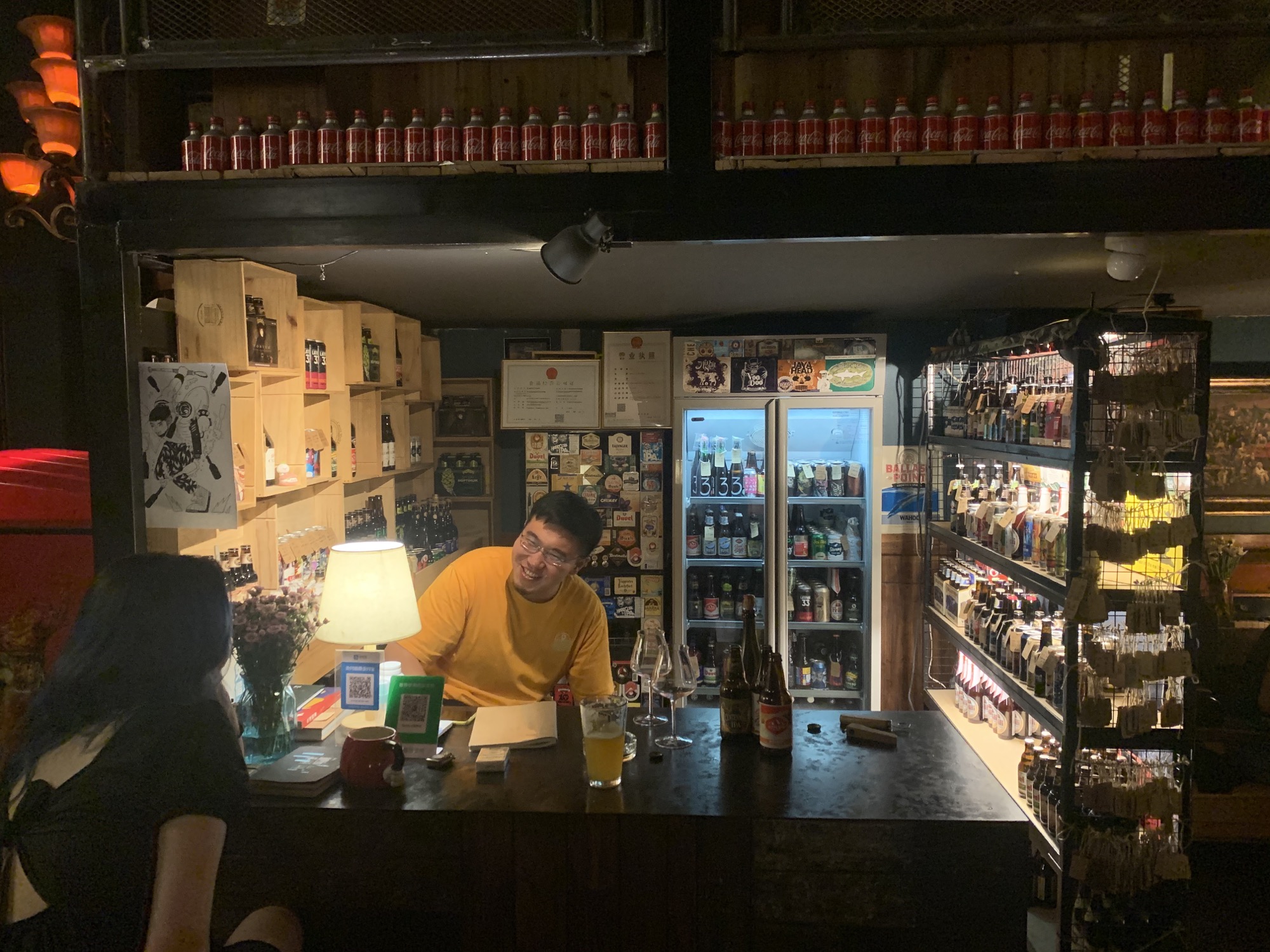
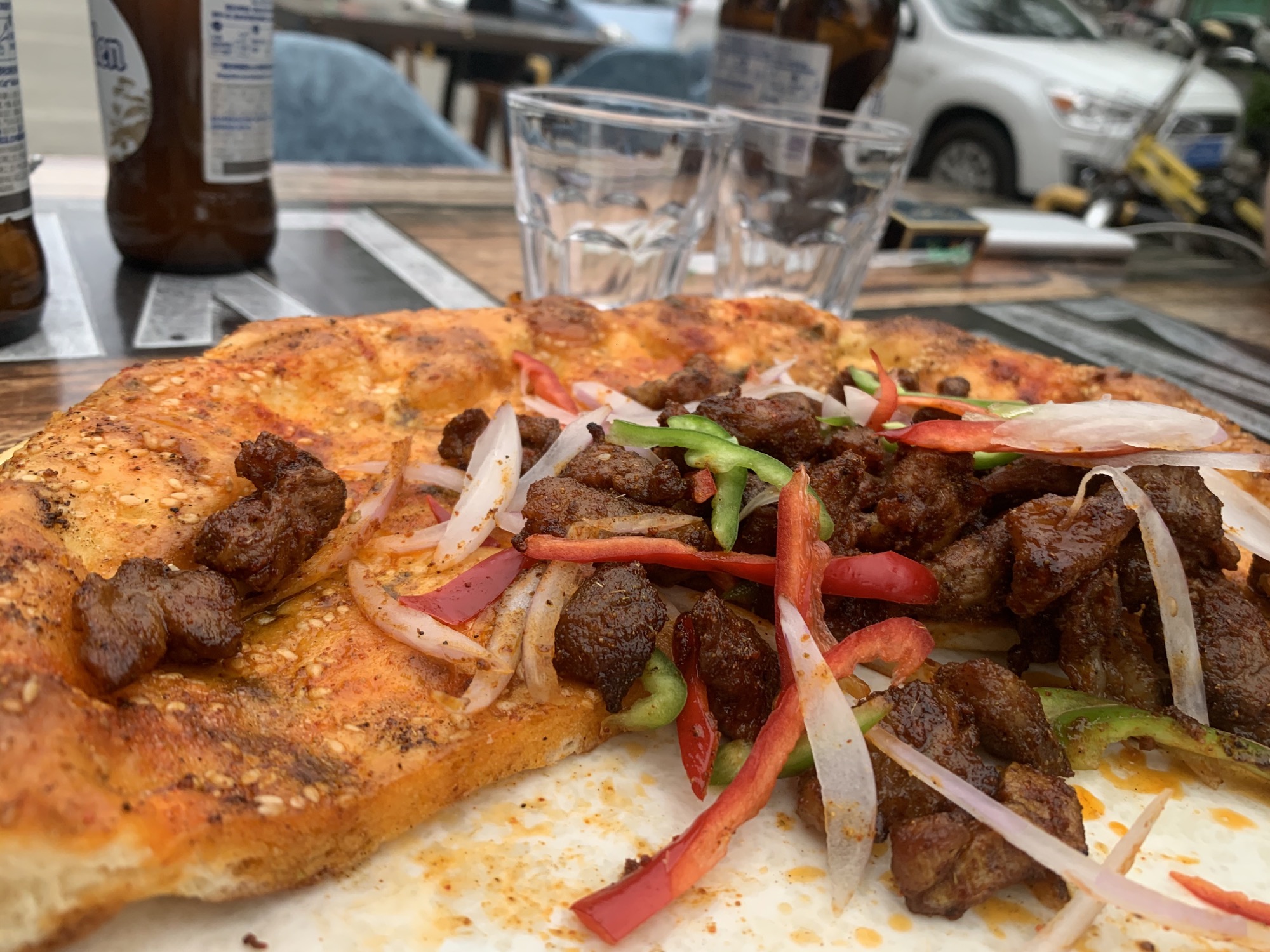

Leaving Jiayuguan the next morning, it is rainy and, to our surprise, cold. A scarf purchased in a small mountain village near Bingling Temple becomes a lifesaver for me. We are eager to get to our final destination, Dunhuang, so we do 100 kilometers at a time without stopping. Eventually we emerge from underneath the clouds; the cold is replaced by wind, the elemental kind, amplified by the lumbering wheels of roaring semis passing within a meter of us. The wind is savage; the sand rises with it and stings on the face.
It becomes hot just as we notice the sun’s descent. We stop to snap a picture with a wind-torn fiberglass policeman on the side of the road, one which has seen better days; he’s missing an arm, which we hold up with wide smiles. While posing, two real policemen drive by, slowly. We put on our best “nothing to see here” face.
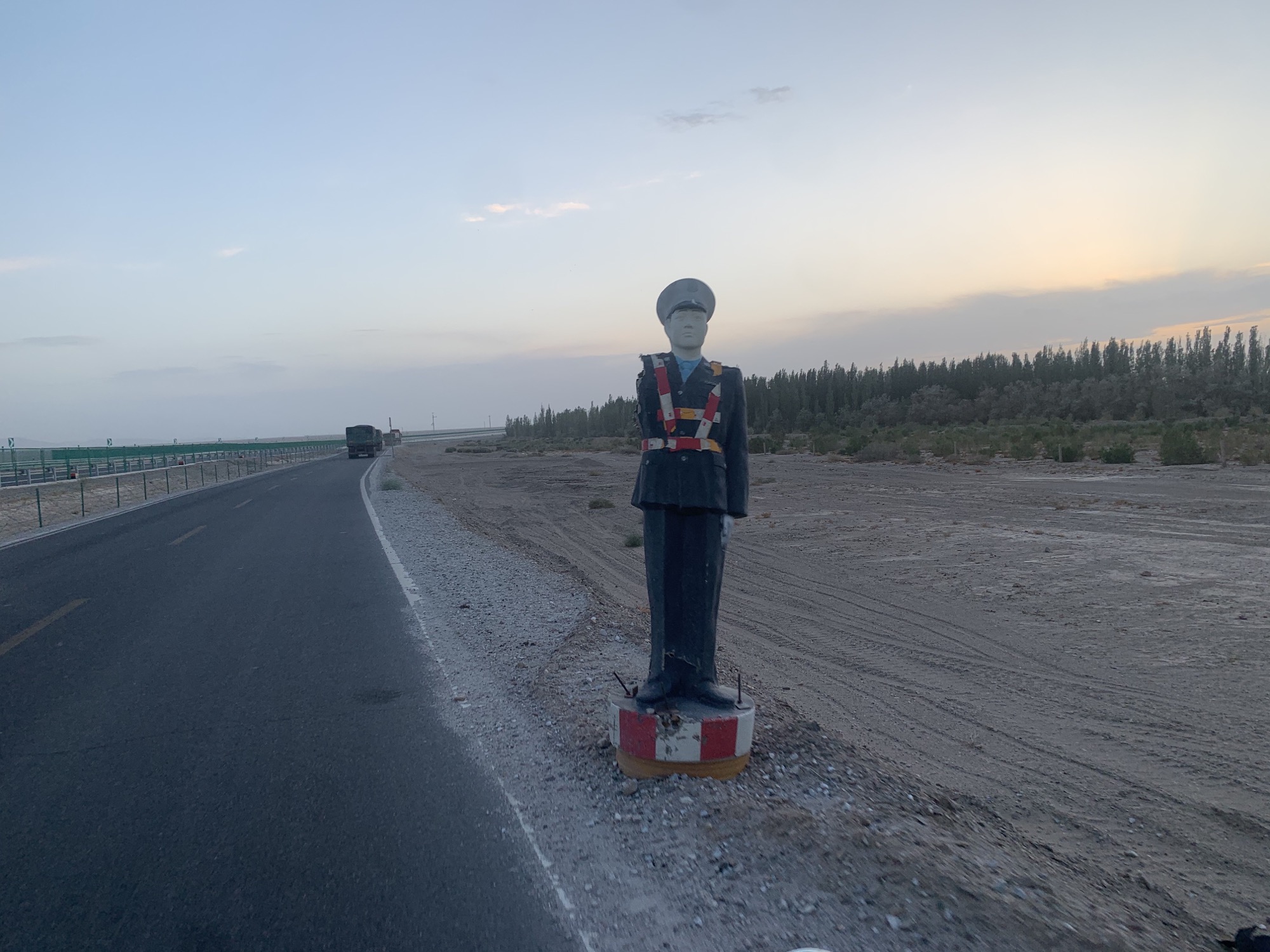
The sun is below the horizon but it’s still light out when we approach a police checkpoint. An officer waves us over to the side.
“What are you doing way out here?”
We’ve been around long enough to know that run-ins with authorities usually turn out OK, but in the moment, we feel a pang of unease, the kind conditioned into us from expecting the unexpected. Wild things can happen on the frontier. The Swedish explorer Sven Hedin, in 1934, was robbed at gunpoint of his transportation — his trucks — by the Ma clique, led by the Gansu warlord Ma Zhongying. “He was like the rider on the pale horse,” Hedin said of Ma.
“We’re on a motorbike journey,” Mads says, more than ready to tell the story of the beekeepers, the partygoers, the fallen scooterist, the mountain mist, the rain, the bars — of plucking a guitar in Zhangye and singing,
I see a lot of beautiful people here today!
After we have drunk our drinks,
I guess that’s when we’ll be on the road again!
The officers don’t give him a chance. “Where are you from?” Cop No. 2 asks, decidedly un-deathlike.
“Denmark,” Mads replies with a gusto that he selectively deploys when he believes the listener needs to be disarmed. (This is not his first run-in with inquisitive authorities.)
“Where are you driving from?”
“Jiayuguan. Two months ago we started from Beijing.”
“Awesome!” Cop No. 3 chimes in. This remark brightens everyone up. Mads adds that he’s been driving motorbikes for two years.
“Very awesome!”
After a little more back-and-forth, Cop No. 4 — they are all young, but this guy may have been the youngest — says, “They’re foreigners. Just let them go.”
Cop No. 3 says to me — wrongly assuming I’m the more experienced traveler — “Tell your friend to drive safe.”


Dunhuang, the ancient oasis, rests under a dome of deep violet. It is 10 p.m. Over the past two weeks we had driven across pastures, up and around mountains, along rivers, and through deserts; we had encountered rain, fog, and heat; been battered by gravel and dodged cavalier drivers. And we had been chased by the coronavirus, the specter of which clung to the motorbike’s Beijing license plate. It feels good to arrive.
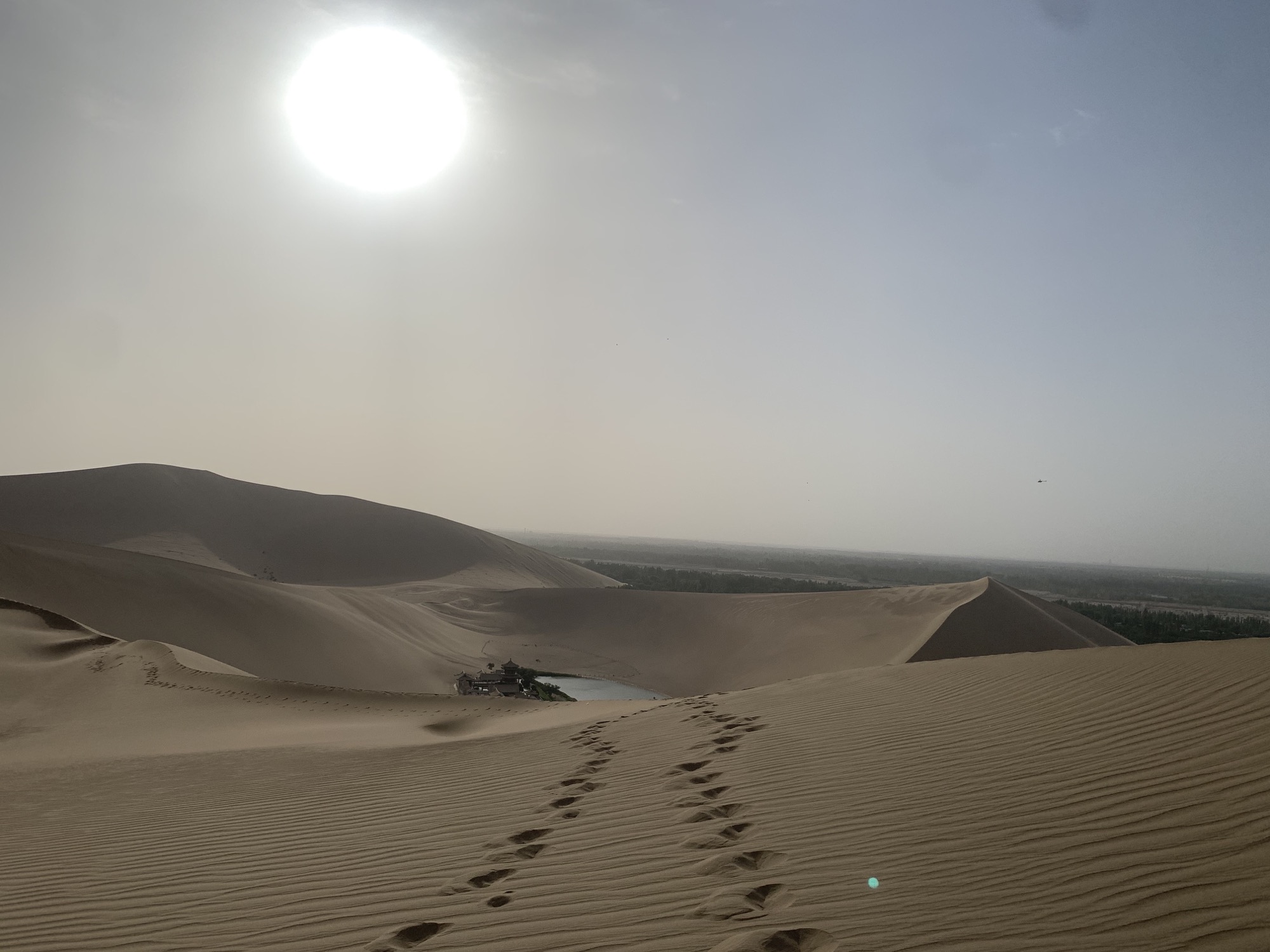
The next day, Crescent Lake, and then the Mogao Cave Grottos. Like at Maijishan, there are hundreds of little eyes carved into the rock face of these grottos, built more than 1,500 years ago when the Buddhist monk Le Zun, scaling the harsh terrain, had a vision of thousands of Buddhas illuminated by the golden rays of the sun. Dunhuang became a mecca of world art, fueled by wealthy and powerful patrons. Merchants paid for the construction of grand caves with Buddhist sculptures and frescoes, hoping that their investments would please the Buddha and allow them safe passage across the treacherous lands ahead. But look on my Works, ye Mighty, and despair: sands rose, beauty retreated, and everything was forgotten for centuries, utterly lost.
In the early 1900s, the Daoist priest Wang Yuanlu styled himself as the protector of the Mogao Caves, and conducted several botched attempts at restoring artwork that had decayed under flooding and sandstorms. By sheer coincidence, Wang discovered a treasure trove of manuscripts in a hidden cave, as smoke from a cigarette or candle supposedly slipped through hidden cracks to a chamber that had been sealed for almost a thousand years. As he presided over the Mogao Caves, names that live in infamy in modern Chinese historical annals passed the site and bought, traded, and swindled sculptures and manuscripts from his hand. Paul Pelliot, Otani Kozui, Sergei Oldenburg, Langdon Warner, and Aurel Stein, to name a few. It is Stein who has drawn particular scorn and ire in China, because among the random bundles of manuscripts extracted from the library cave, he found, upon closer examination back in Great Britain, that he had in his possession the oldest printed text in world, The Diamond Sutra, a random print of Buddhist sutras dating back to 868. It is currently displayed at the British Museum in London.
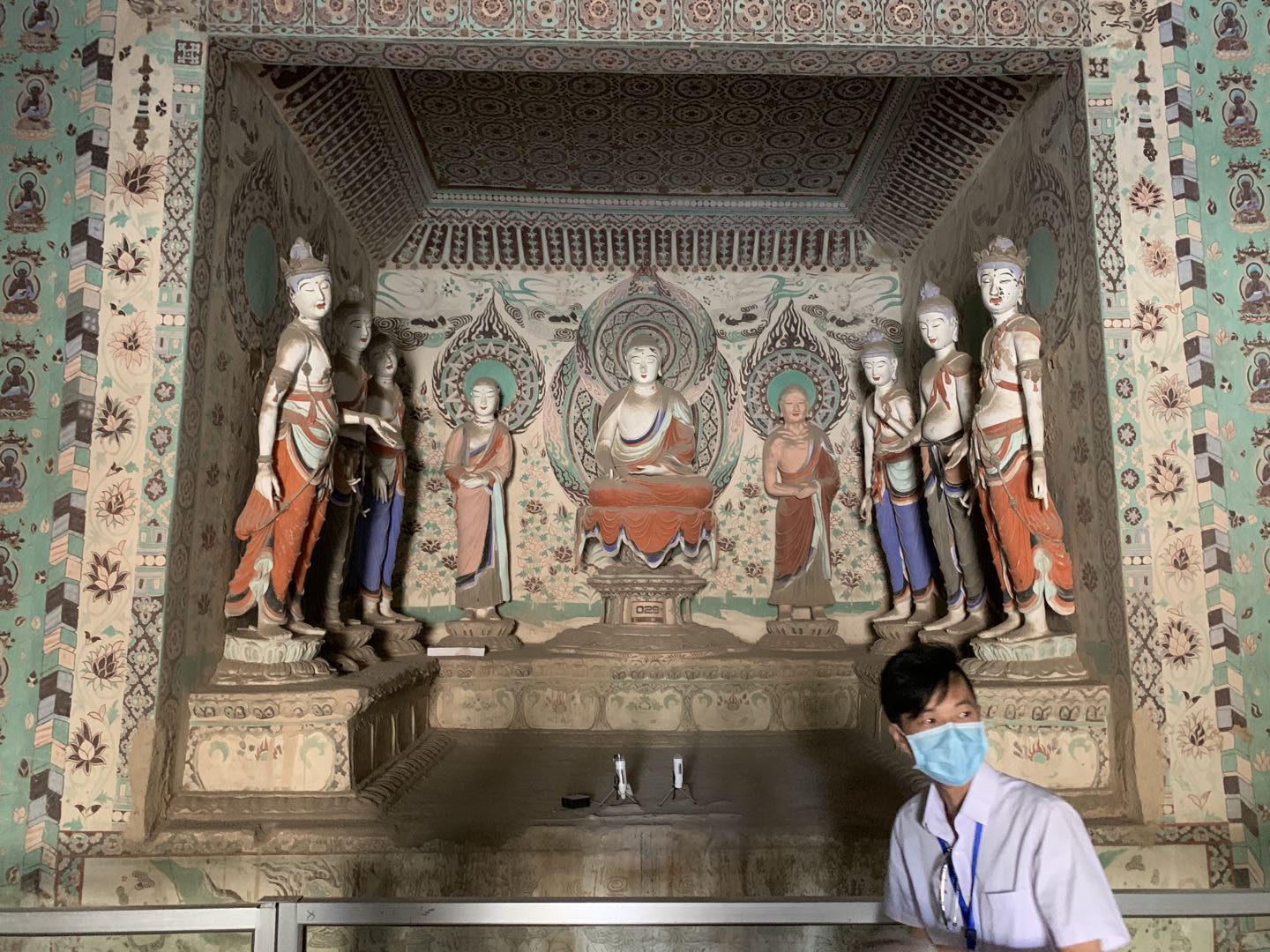
Mads, who is a nerd for Chinese history, informs me of the above. He is in paradise, surrounded by artifacts and remnants of the past. But he is also fascinated by the people, who in turn gravitate toward him, this tall foreigner who speaks fluent Chinese. “The reason I got inspired by Hennig Haslund is that, contrary to some of the other explorers, his focus does not lie on the things or the palaces, or the sites — although he has some very romantic descriptions of these — but his focus is the people, it’s the people and the stories they tell,” Mads says. “And also the legends that they carry in their traditions.”
Not long after, Mads leaves to continue his trip across Qinghai with his girlfriend, who met up with us in Dunhuang. He will then cut through Sichuan, south, along the Yangtze River, before eventually following the Long March route back home to Beijing.
I am only supposed to be in Dunhuang two nights, but flights back to Beijing are canceled due to COVID-19, so I take time to walk the dunes, watch a Dragon Boat Race on the river, scope out every market. In the spirit of finding people and their stories, I venture out to the city and find 299 Moto, a motorcycle-themed cocktail bar. I meet two young travelers who are from Wuhan, the epicenter of the COVID outbreak, who are taking their first trip since the end of their lockdown. I meet a hip-hop dancer who used to work the clubs in Beijing. I meet a couple of traveling salesmen who want to discuss the situation overseas, vis-a-vis China. “It used to be that we liked using VPNs to get news from abroad,” one of them says. “But what’s the fucking point these days? BBC, CNN, they’re all out to smear China.”
After all of them leave, I sit with the bar’s boss and his friend, who complains that the salesmen looked like they were from Shanghai. “They have that arrogance about them.” The boss is from the northeast, where, as he puts it, “If we like you, we like you. If we don’t, we’ll have nothing to do with you.” He notes that southerners make better politicians because they’re wily, while northerners are “too direct.”
And if northerners graced Beijing’s halls of power? “There would be a lot more fighting, that’s for sure,” he laughs.
“But we’re getting better,” the boss’s friend adds. “We’re learning. Look at this city. Ten years ago, these were dirt roads. You had horses pulling carts.”
I look around. What is the spirit of this place? Dunhuang, girdled by the Taklamakan Desert, once upon a time constituted the last stop for caravans before they ventured over the lifeless sand dunes of the Tarim Basin on the way to Central Asian and Western civilization. It was one of the most important places in the world, an international city on the cutting edge of art and commerce. What was worth preserving, and what could be? Is it dangerous for the Chinese Communist Party to celebrate this period, when the emperor’s authority over this frontier was tenuous? At some point within the last two decades, China’s leaders decided it no longer benefitted them to champion internationalism, for fear that it would weaken their strength at home. How much of their country’s culture are they sacrificing — and will sacrifice — in the name of stability, the right to continue paving roads in the desert?
There is another way of looking at this, of course. (A thousand ways, one for each Buddha illuminated by the golden rays of the sun.) Chinese cities appear the same, but that doesn’t mean their stories all are. Dunhuang’s streets were covered with horse manure a decade ago; now they have signs on the corners, in English, that point to markets and other attractions. Whatever problems exist can be fixed with time — which proceeds in a circle, after all.
The bar owner and his friend are still chatting when my cab arrives, their backs to the now-empty bar, a river to our west, with colorful lights reflecting off the dark water. They’ll probably be up until sunrise, which in Dunhuang is early, around 5 a.m. Just one short hour away.
